Unit 2
Economic Indicators and the Business Cycle
Explore economic indicators, GDP, unemployment, inflation, and business cycles
2.1: Circular Flow Model
Economic Indicators
Different measures that economists use to determine the overall size and health of an economy, similar to how a doctor uses health indicators to assess a patient.
Circular Flow Model
A model showing the important interactions between different groups in an economy.
Households
Individuals or groups who own the factors of production.
Firms
Businesses or producers.
Product Market
Anywhere households and firms interact, where households give money in exchange for goods and services.
Key Points
- Example: Going to a grocery store to buy food or a restaurant to buy a meal.
Factor Market
Anywhere that firms acquire resources, such as labor, from households.
Key Points
- Example: A worker getting hired as a chef at a restaurant.
Injections
Money that was not previously flowing through the economy being added into the circular flow.
Key Points
- Examples: Government spending, investment, exports
Leakages
Money leaving the circular flow of the economy.
Key Points
- Examples: Taxes, savings, imports
Gross Domestic Product (GDP)
The total monetary value of all final goods and services produced within a country’s borders in a given year.
Key Points
- Definition should be memorized because every word matters
Intermediate Good
A good used to help produce something else and not counted toward GDP to avoid double-counting.
Key Points
- Example: Flour used to bake a cake
Expenditure Approach
Calculating GDP by adding up all spending by households, businesses, government, and the external sector.
Key Points
- Formula: GDP = C + I + G + NX
Consumption (C)
All household spending in an economy.
Investment (I)
Business spending on capital goods like machines, not stock purchases.
Government Spending (G)
Government spending on goods and services, excluding transfer payments.
Key Points
- Examples: Military, new roads
Net Exports (NX)
Exports minus imports; imports are subtracted to avoid counting foreign production in GDP.
Government Transfer Payments
Money the government gives without receiving a good or service in return, not counted in GDP.
Key Points
- Example: Unemployment benefits
Income Approach
Calculating GDP by adding up all income earned in production.
Key Points
- Formula: GDP = W + I + R + P (Wages + Interest + Rent + Profit)
Equivalence of Approaches
Expenditure and income approaches should give the same GDP because every dollar spent becomes income for someone else.
Whiteboards
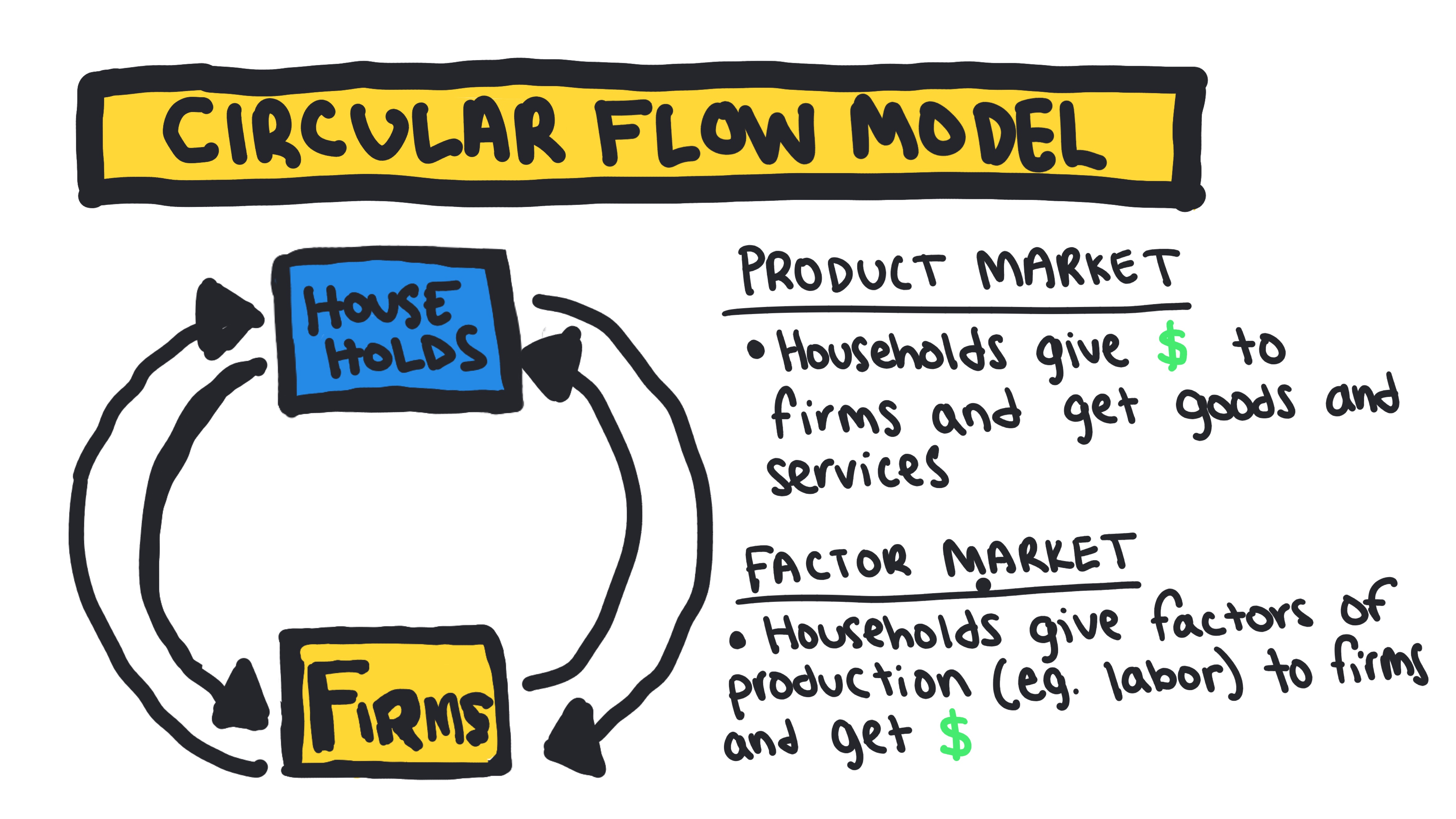
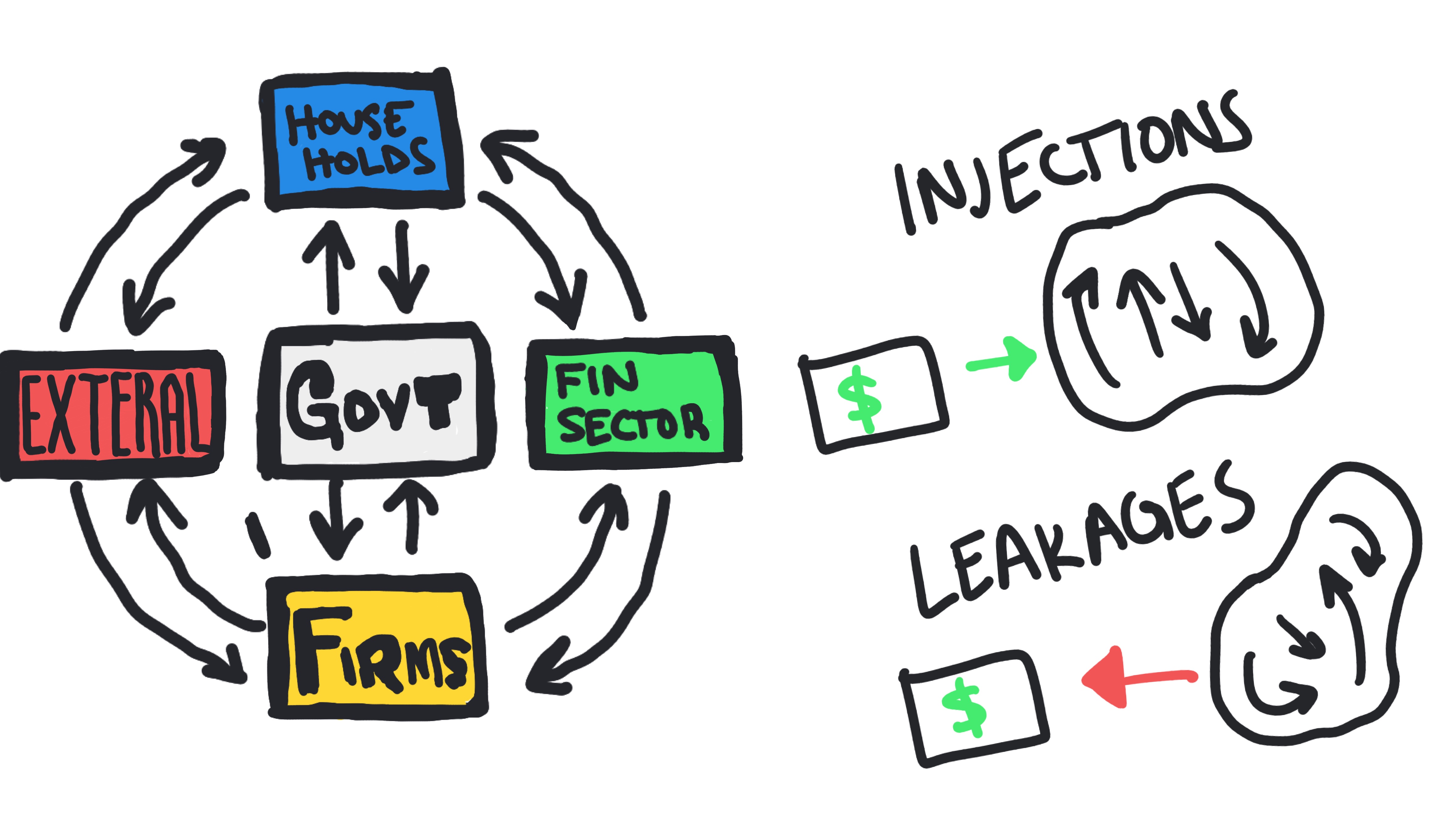
2.2: GDP and Economic Indicators
GDP per capita
GDP divided by population, giving a better measure of individual economic well-being than total GDP.
Key Points
- Formula: GDP per capita = GDP / Population
Non-Market Transactions
Productive work where no money changes hands, not counted in GDP.
Key Points
- Examples: Washing your own car, caring for your kids
Whiteboards
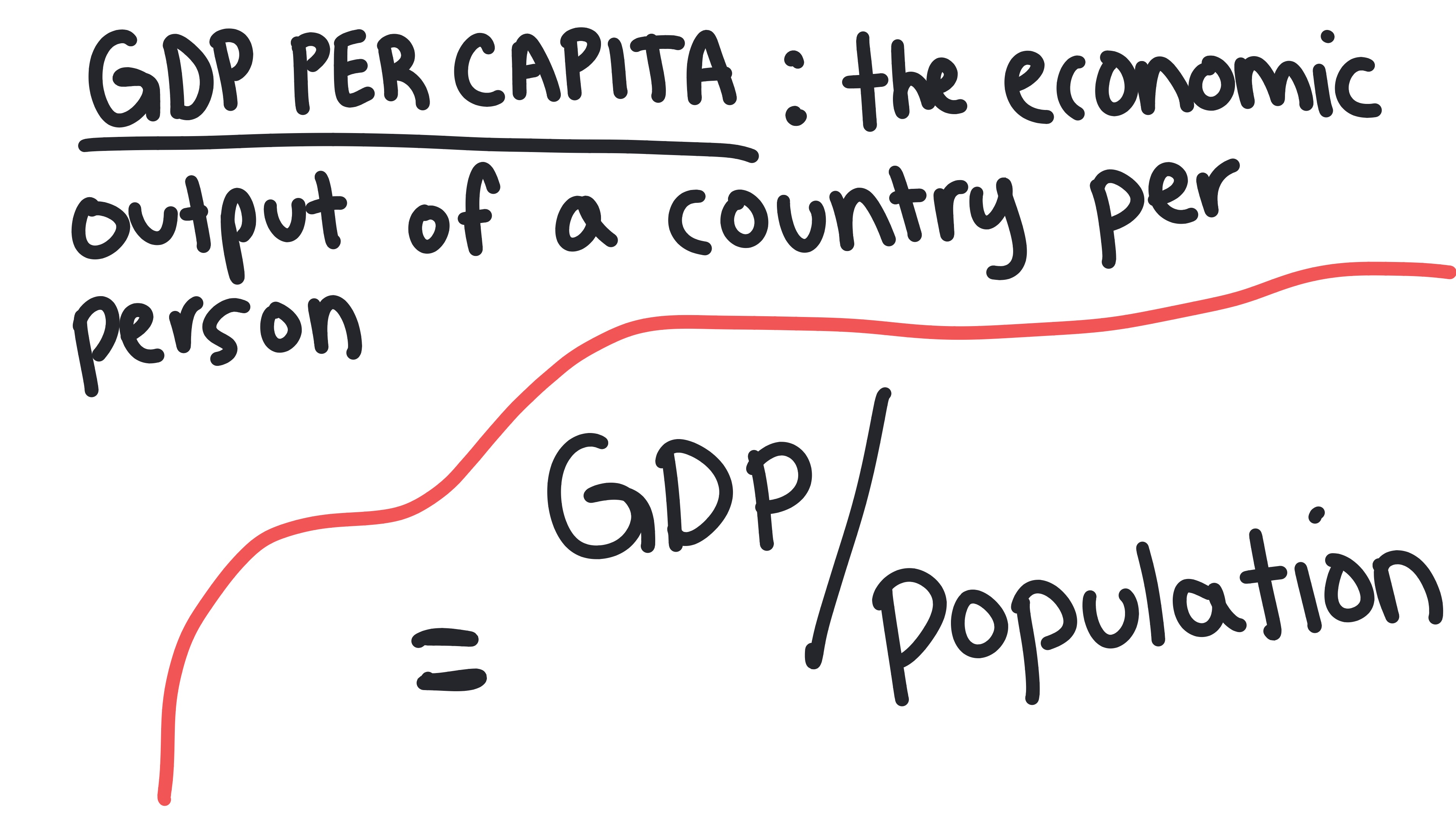
2.3: Unemployment
Unemployed
A person actively looking for a job but unable to find one.
Frictional Unemployment
Temporary unemployment between jobs.
Key Points
- Examples: Career change, recent graduates
Structural Unemployment
Unemployment caused by changes in the economy that make some skills obsolete.
Cyclical Unemployment
Unemployment caused by a recession.
Natural Rate of Unemployment
The unemployment rate when the economy is healthy; includes frictional and structural unemployment.
Labor Force
All employed and unemployed people available to work.
Unemployment Rate
Percentage of the labor force that is unemployed.
Key Points
- Formula: (Number of Unemployed / Labor Force) × 100
Labor Force Participation Rate
Percentage of the working-age population that is part of the labor force.
Key Points
- Formula: (Labor Force / Working-Age Population) × 100
Discouraged Workers
People who have stopped looking for work after being unemployed for a long time; not counted in the unemployment rate.
Whiteboards

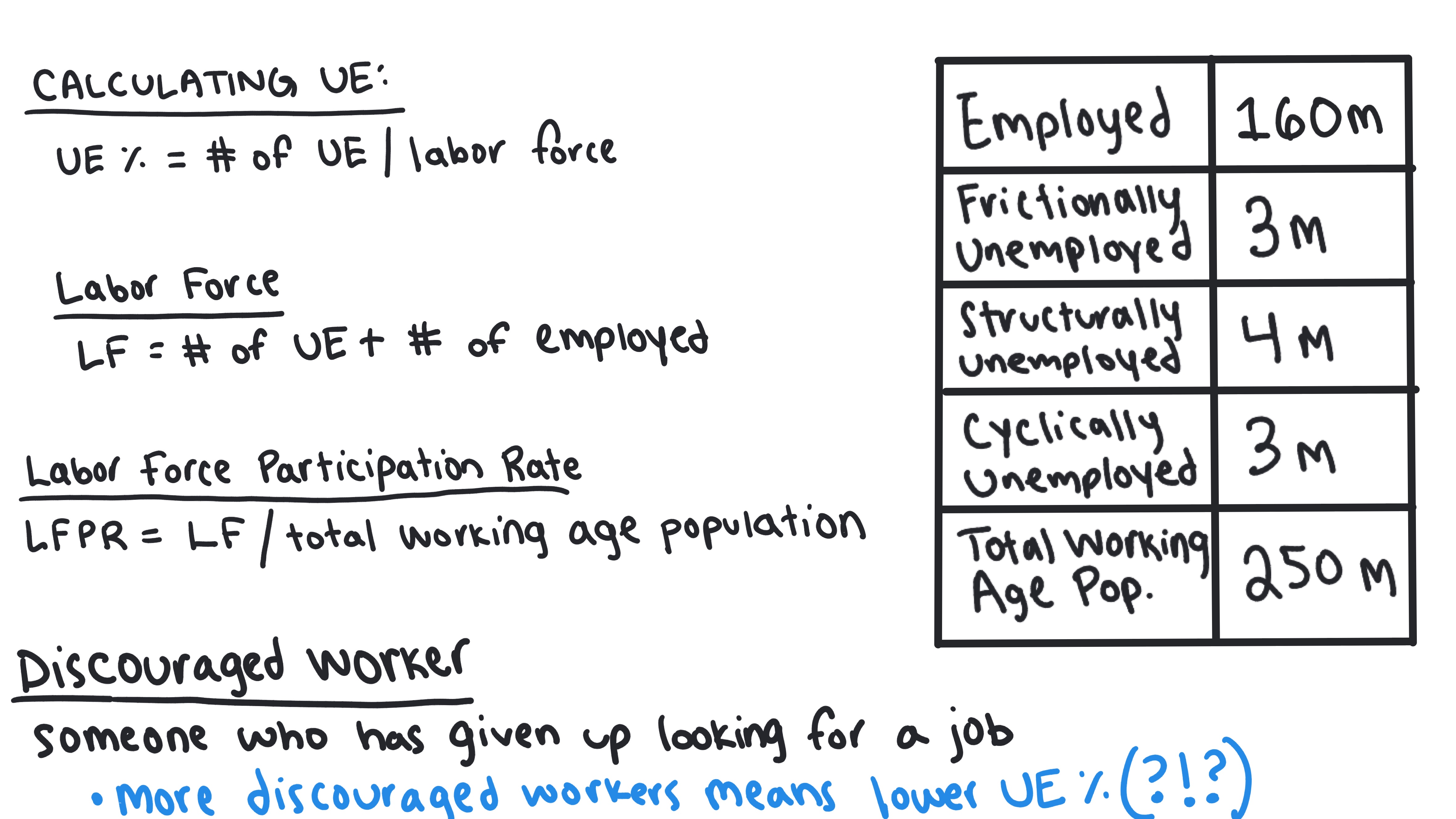
2.4: Price Indices and Inflation
Inflation
A sustained increase in the general price level, reducing purchasing power.
Deflation
A sustained decrease in the general price level; can signal a weak economy.
Disinflation
A decrease in the rate of inflation; prices still rise but more slowly.
Price Index
A measure tracking average price changes for a set of goods.
Consumer Price Index (CPI)
The most widely used price index, based on the cost of a fixed market basket of goods.
Market Basket
A hypothetical collection of goods and services used to track price changes for CPI.
Calculating CPI
Formula for determining the Consumer Price Index.
Key Points
- Formula: (Cost of Market Basket in Current Year / Cost in Base Year) × 100
Calculating Inflation Rate
Formula for determining the percentage change in CPI.
Key Points
- Formula: ((New CPI – Old CPI) / Old CPI) × 100
Substitution Bias
Limitation of CPI where fixed basket ignores consumer substitution, overstating cost of living increases.
Quality Bias
Limitation of CPI where price changes from quality improvements are counted as inflation.
Whiteboards
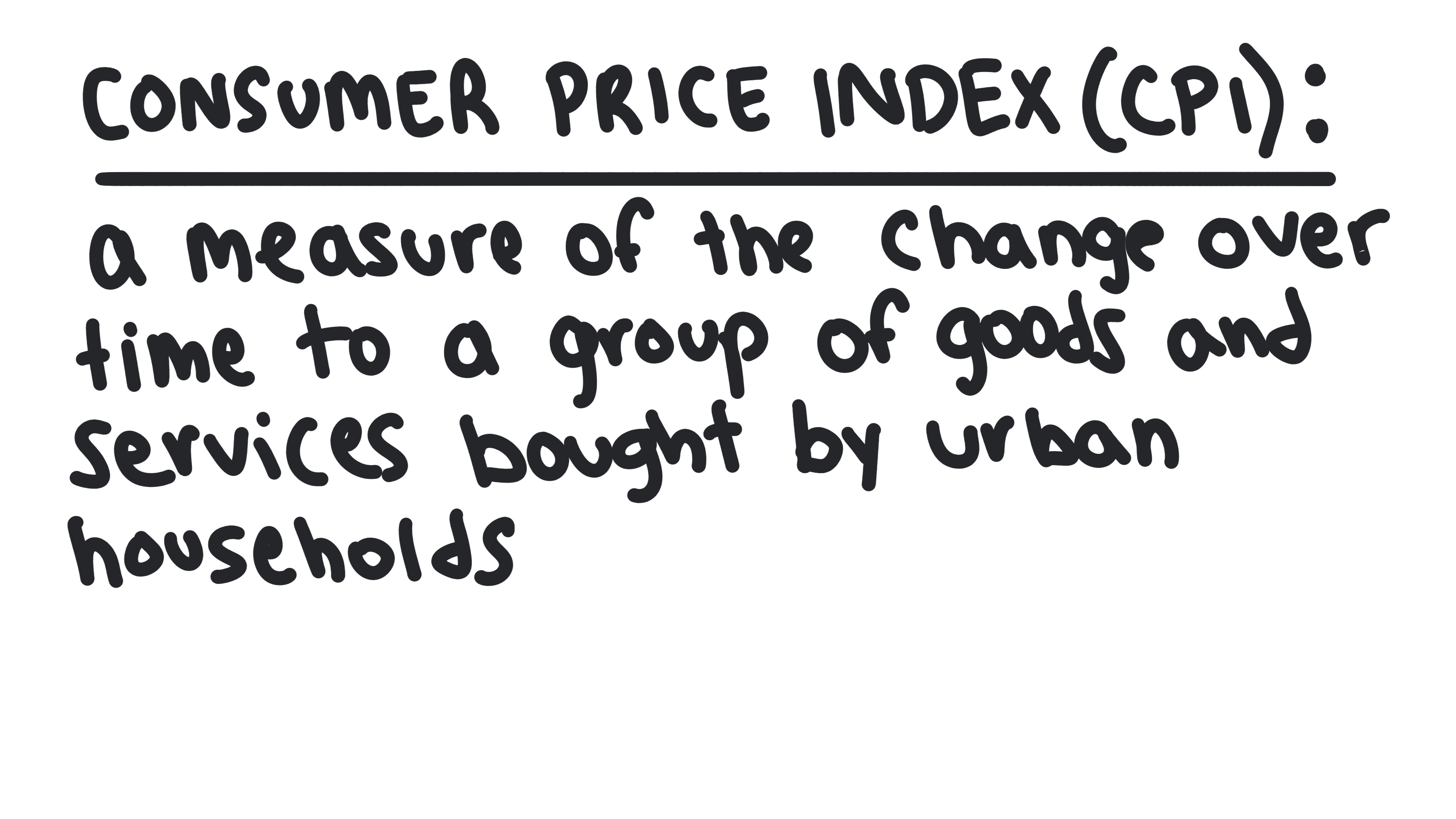
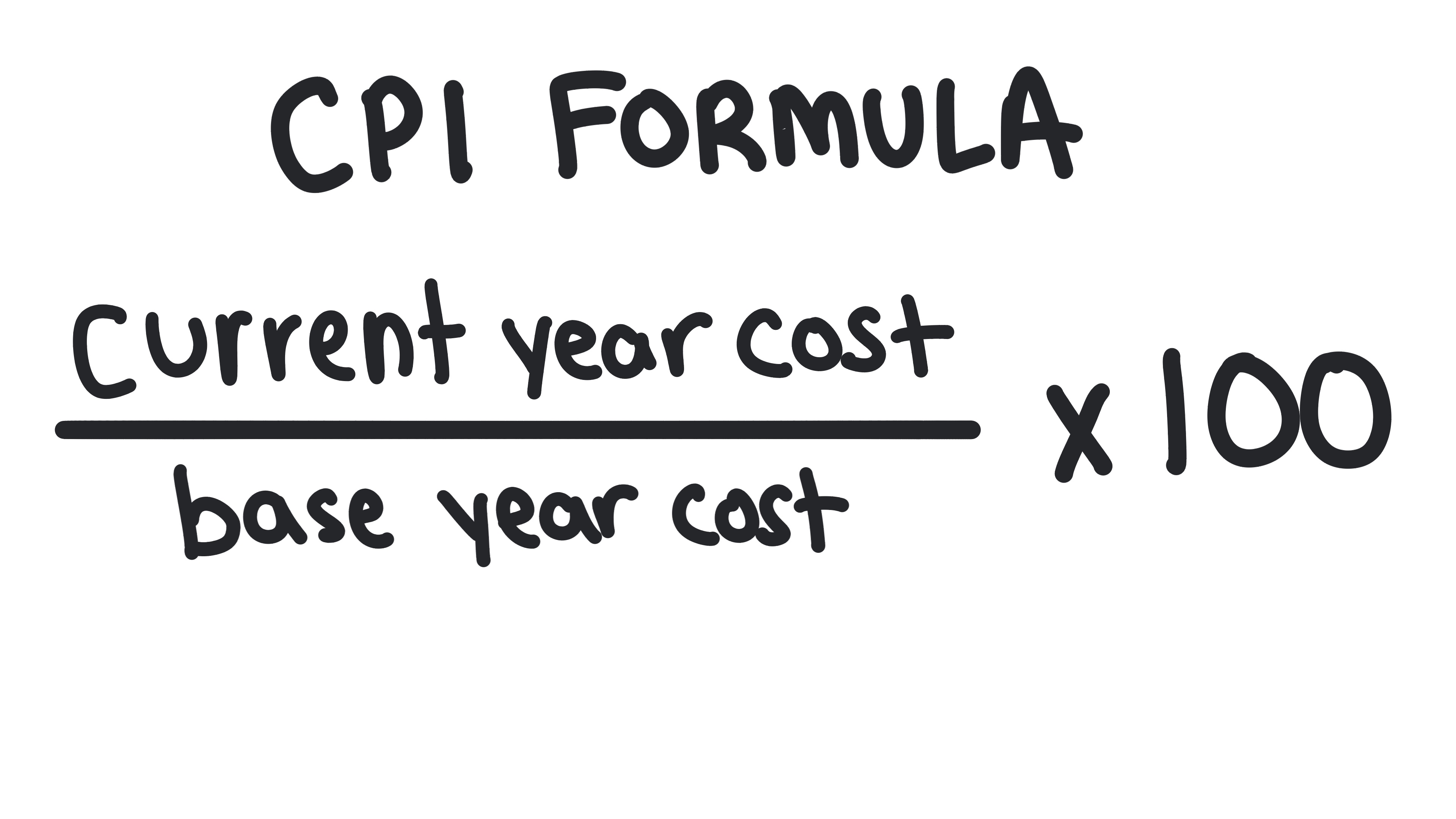
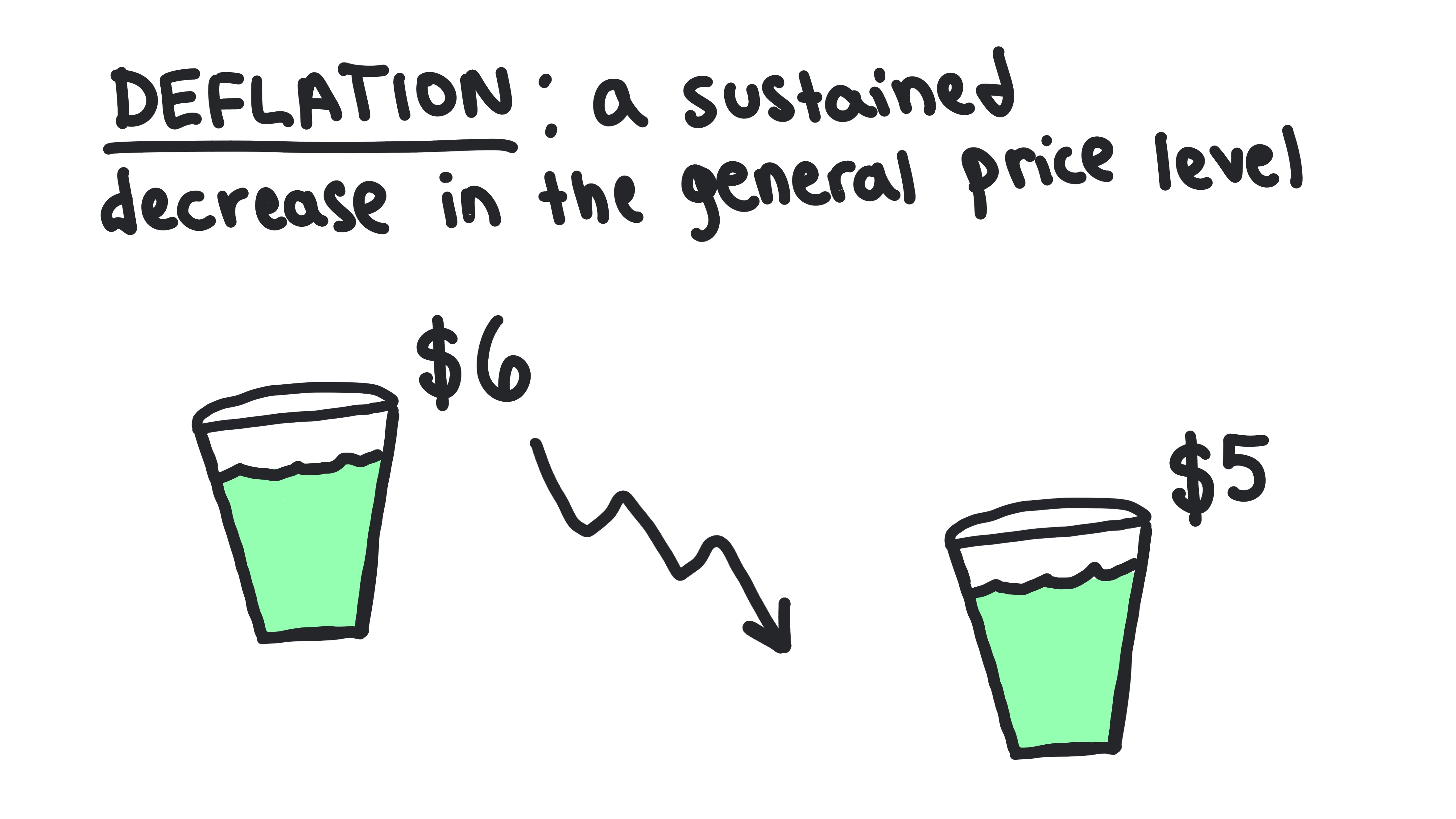
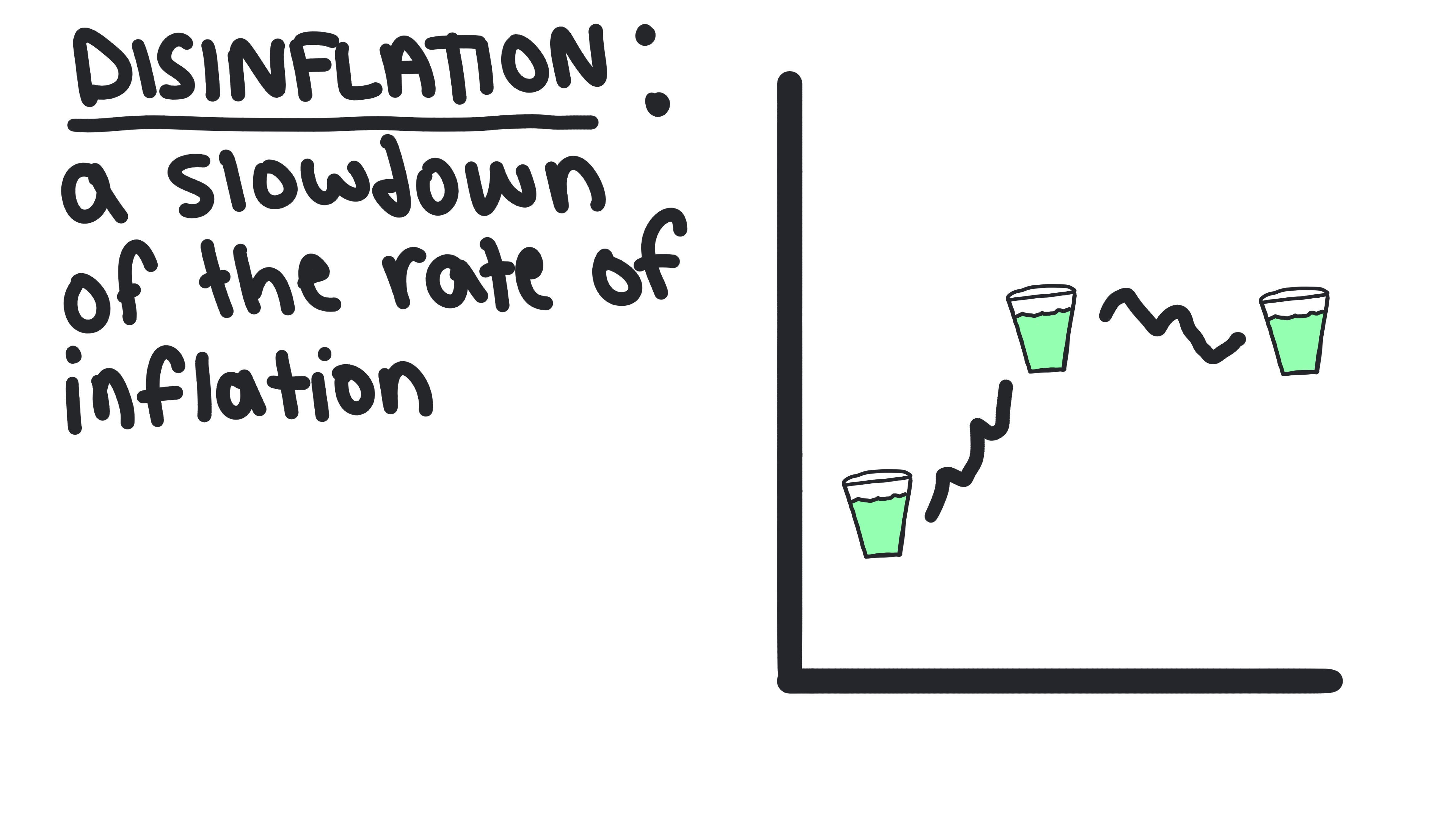
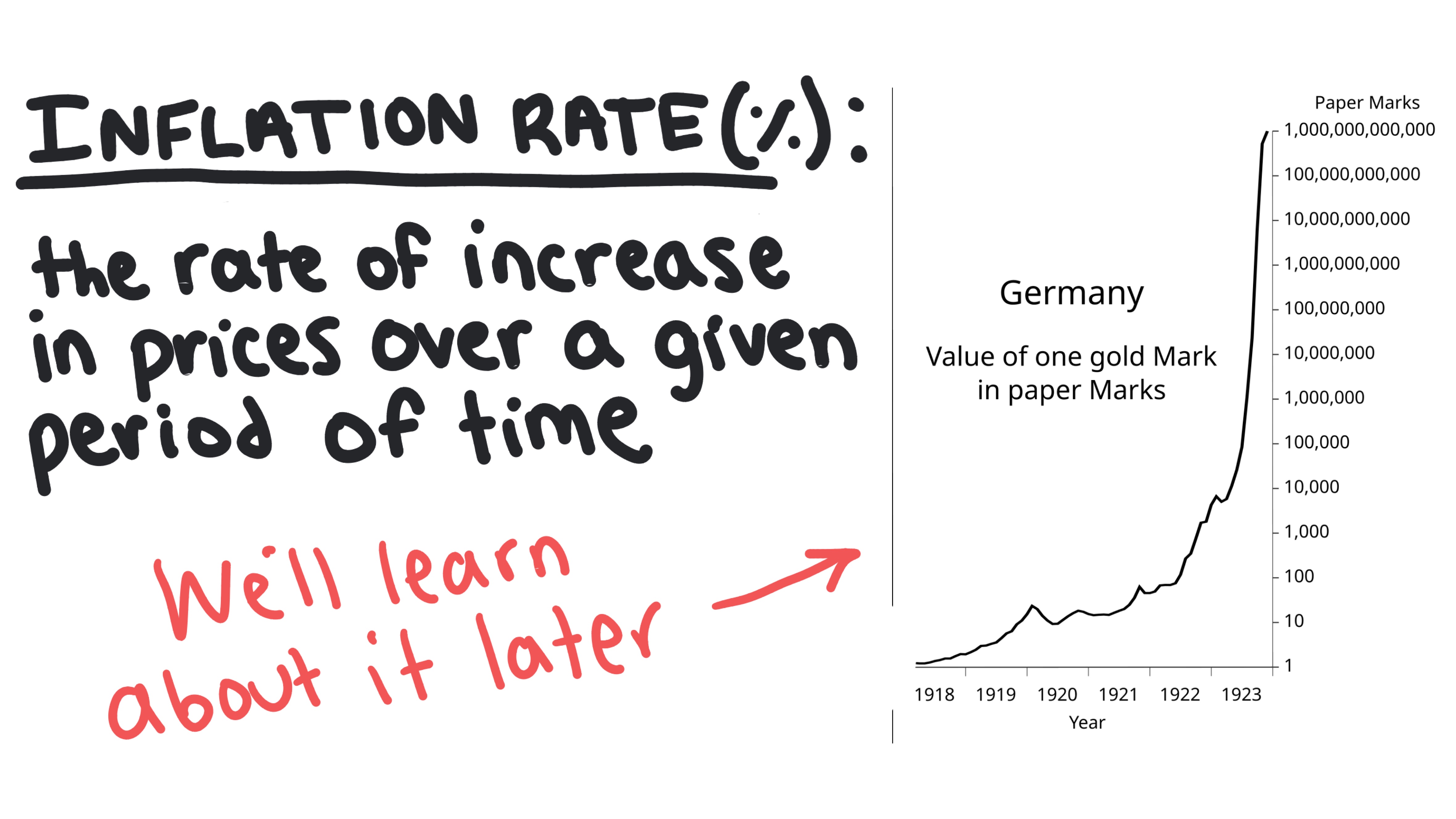
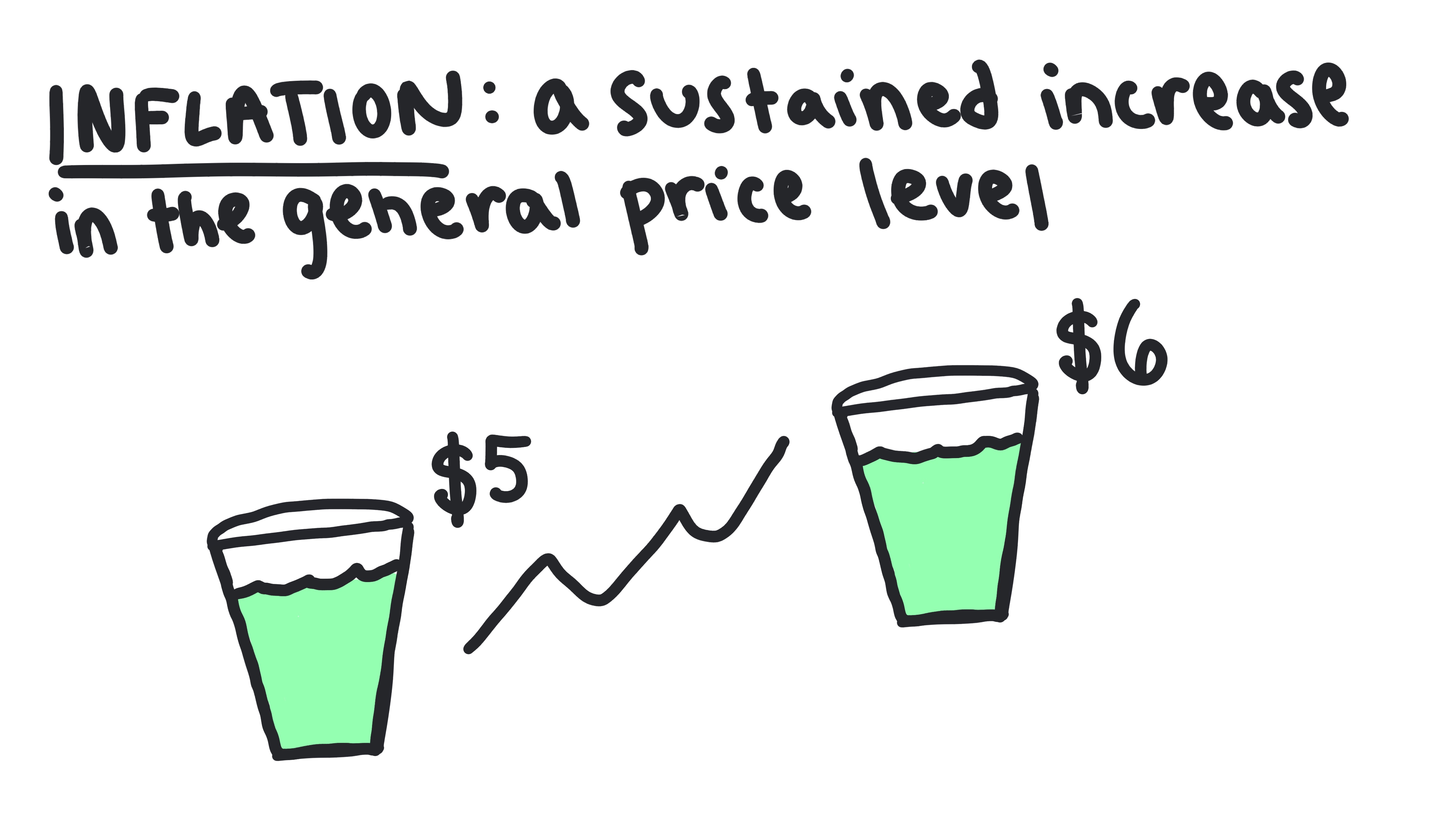
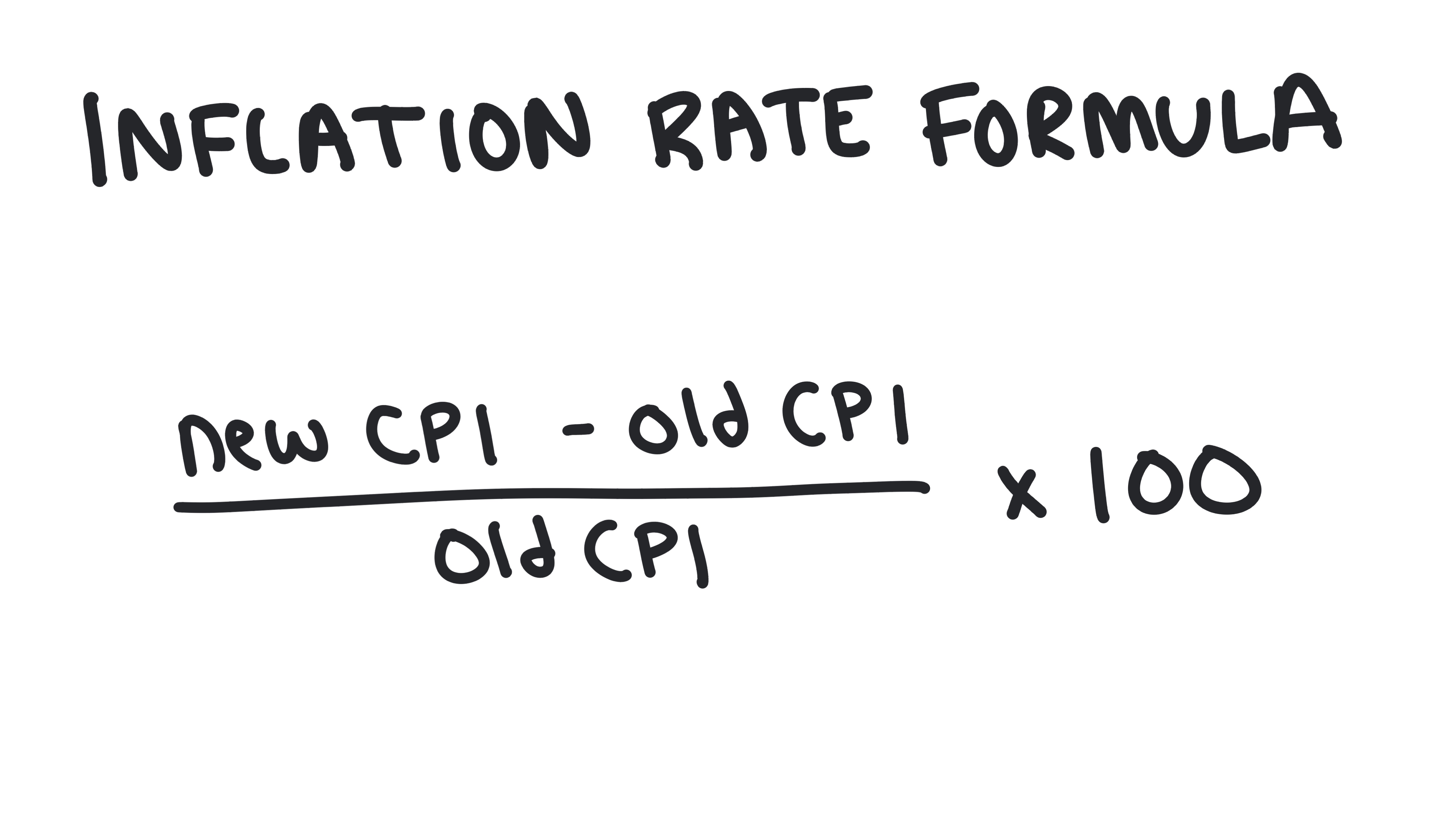

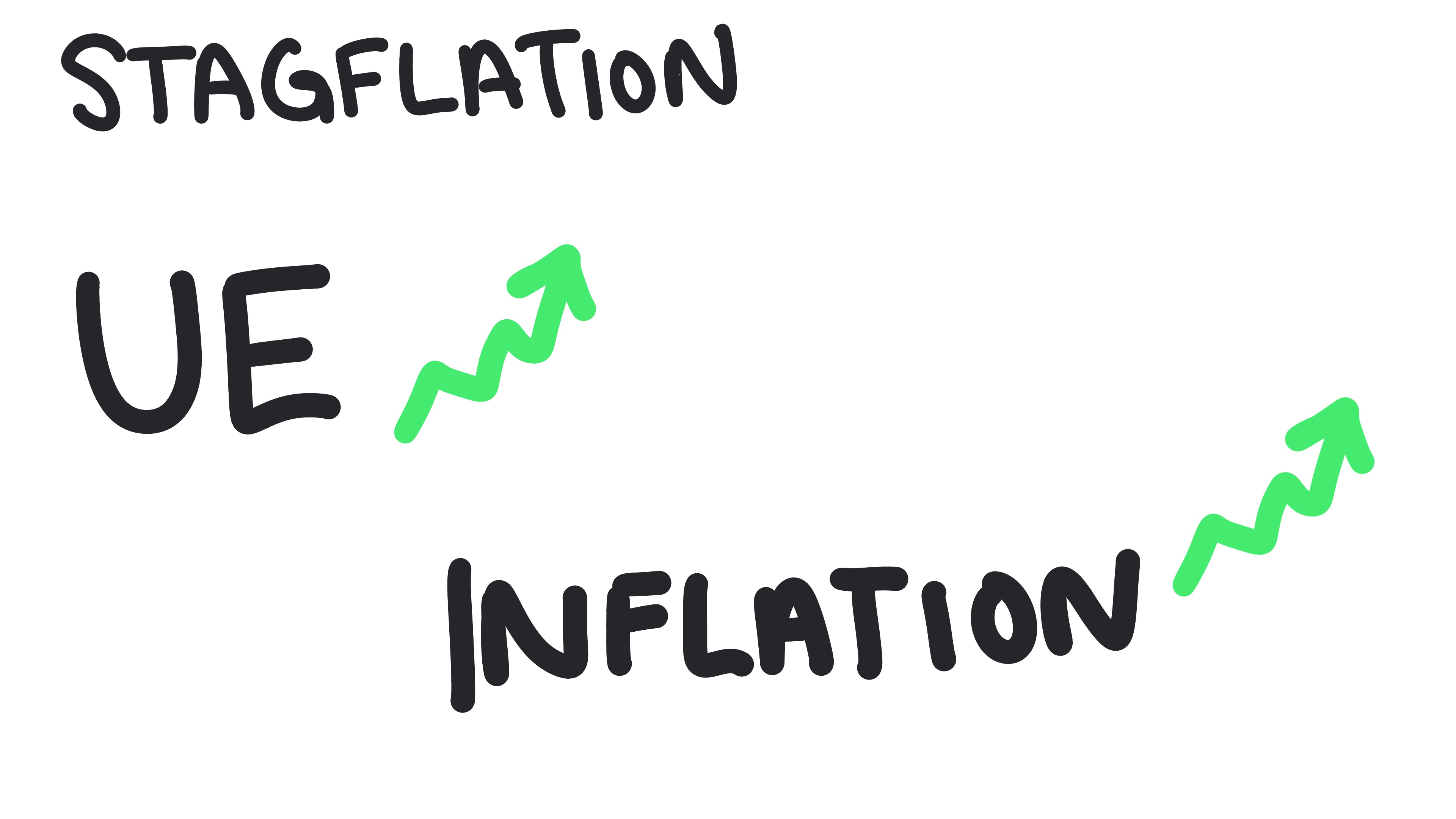
2.5: Costs of Inflation
Purchasing Power
The quantity of goods and services money can buy; reduced by unexpected inflation.
Nominal Variable
A value measured in current dollars, not adjusted for inflation.
Real Variable
A value adjusted for inflation, reflecting actual purchasing power.
Menu Costs
Costs to businesses from changing prices during inflation.
Key Points
- Example: Printing new menus
Nominal Interest Rate
The stated interest rate on a loan, not adjusted for inflation.
Real Interest Rate
The nominal interest rate minus the inflation rate, showing the true change in purchasing power.
Key Points
- Formula: Real Interest Rate = Nominal Interest Rate – Inflation Rate
Whiteboards
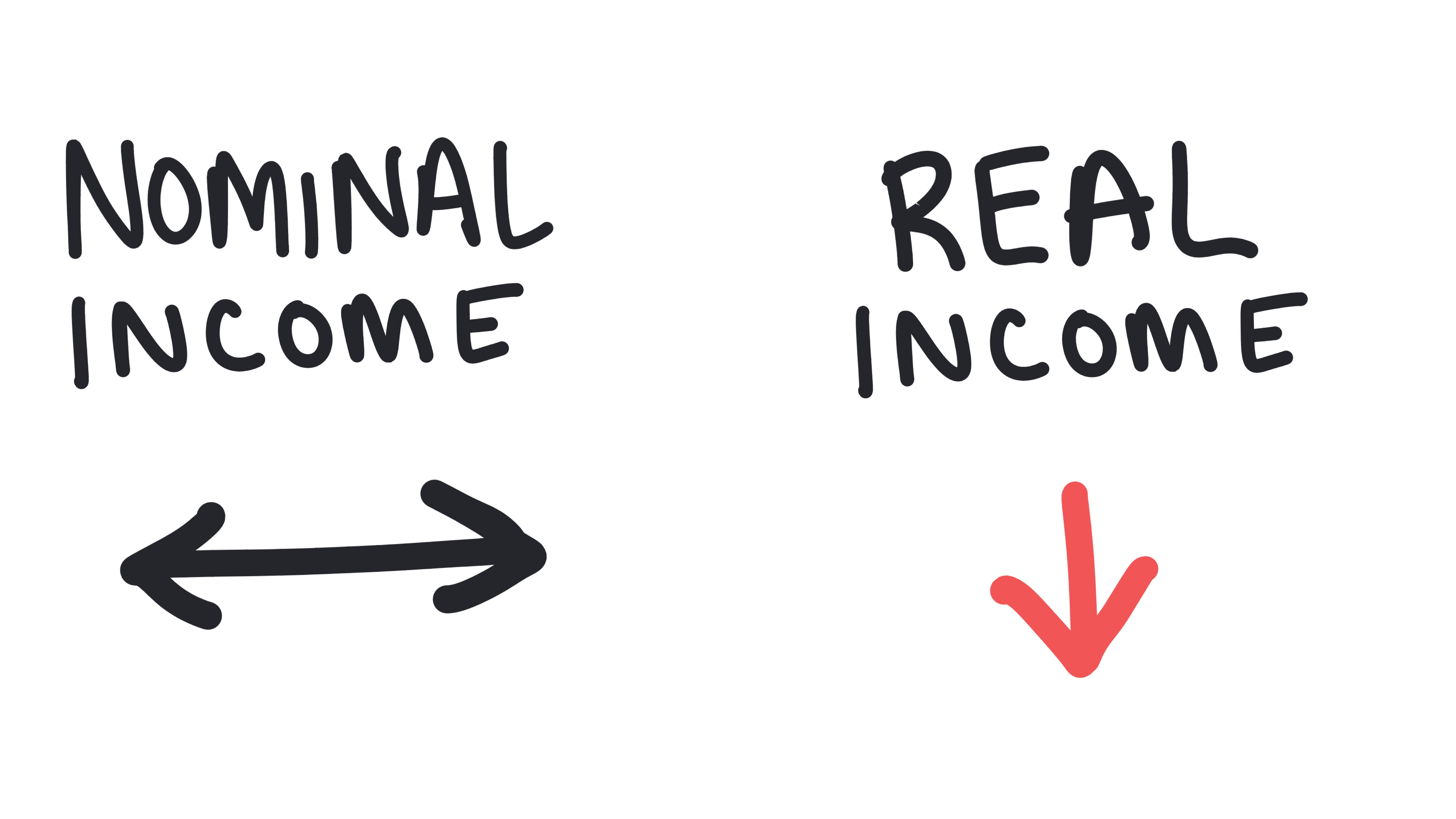
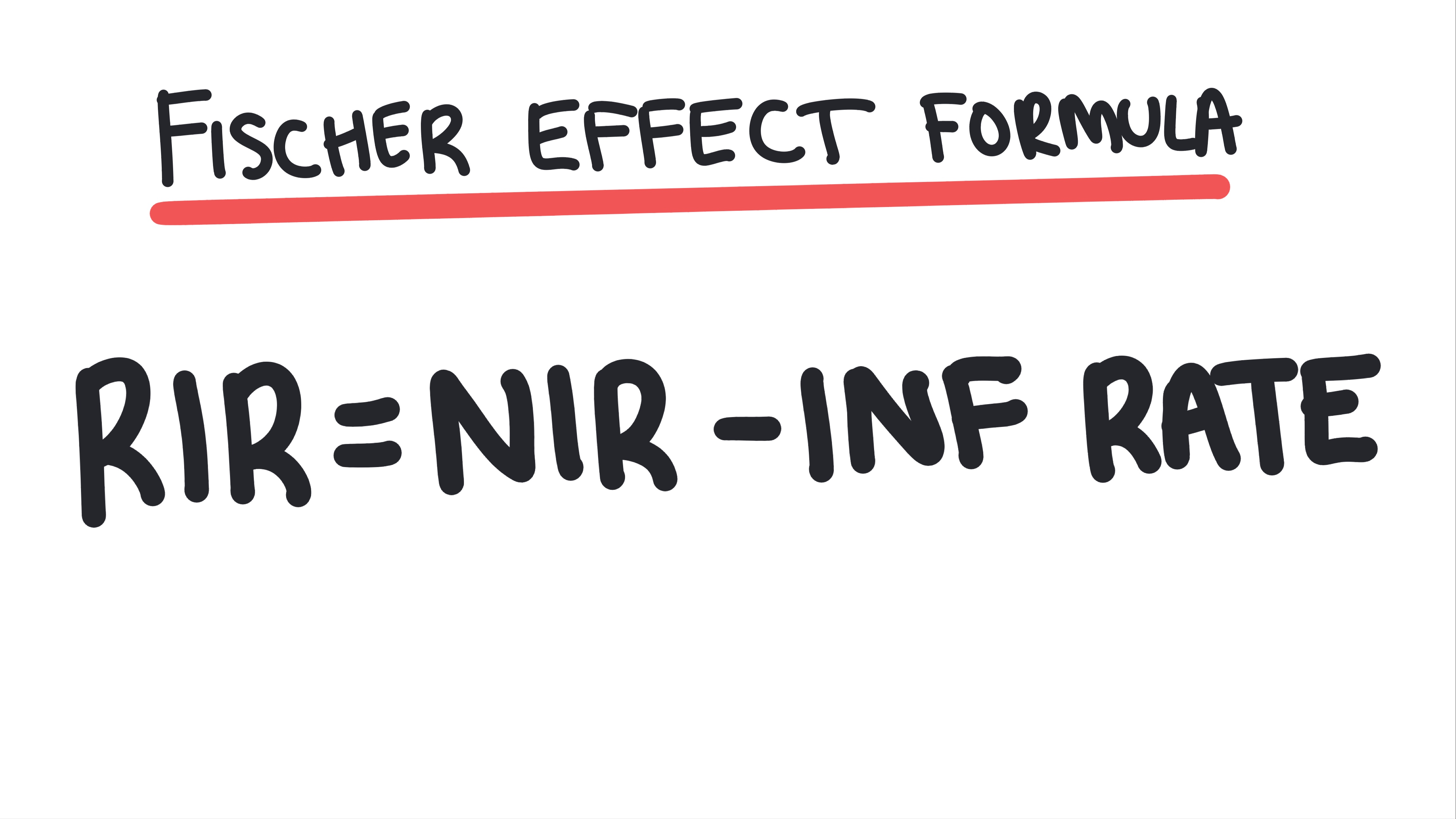
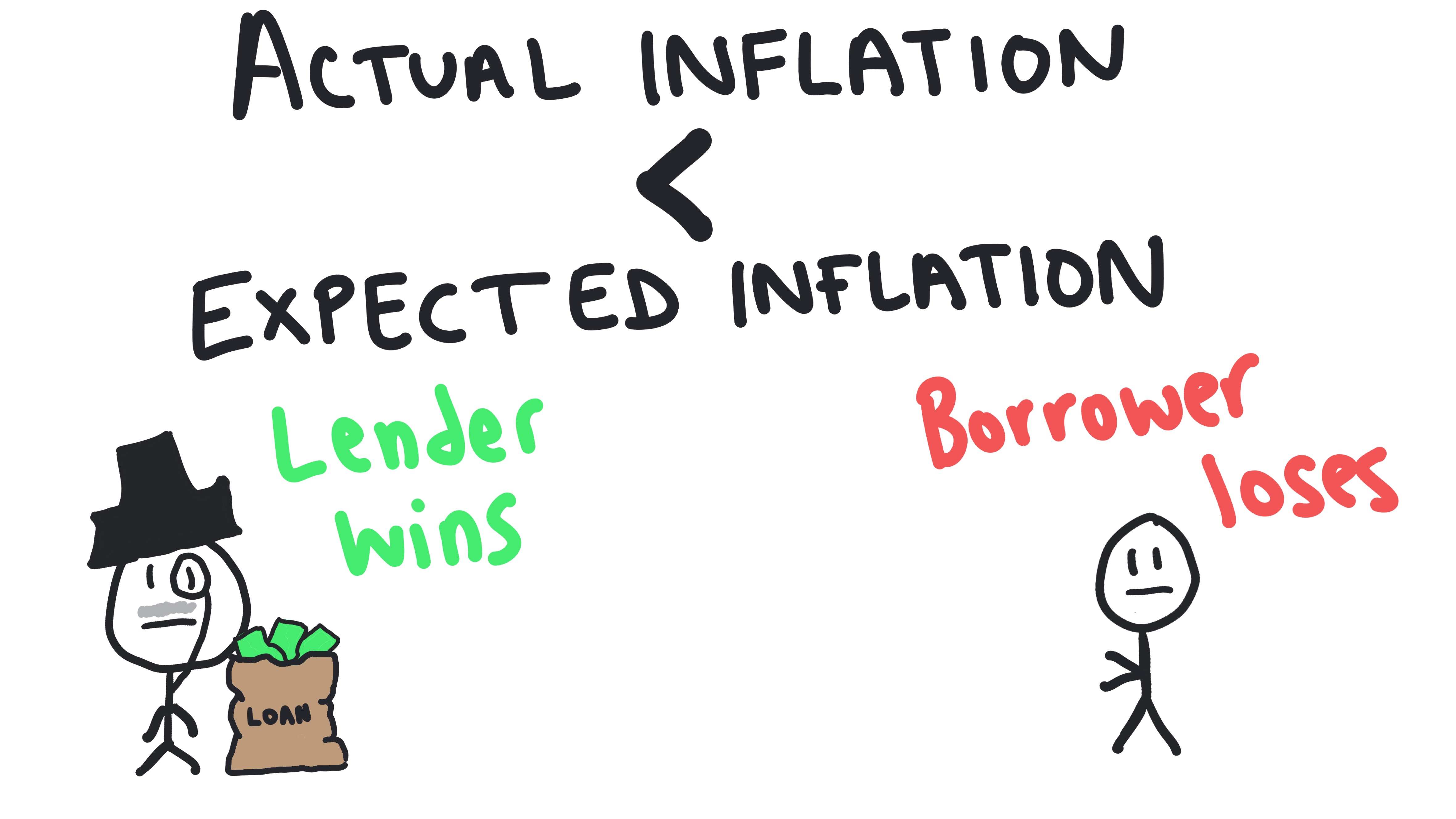
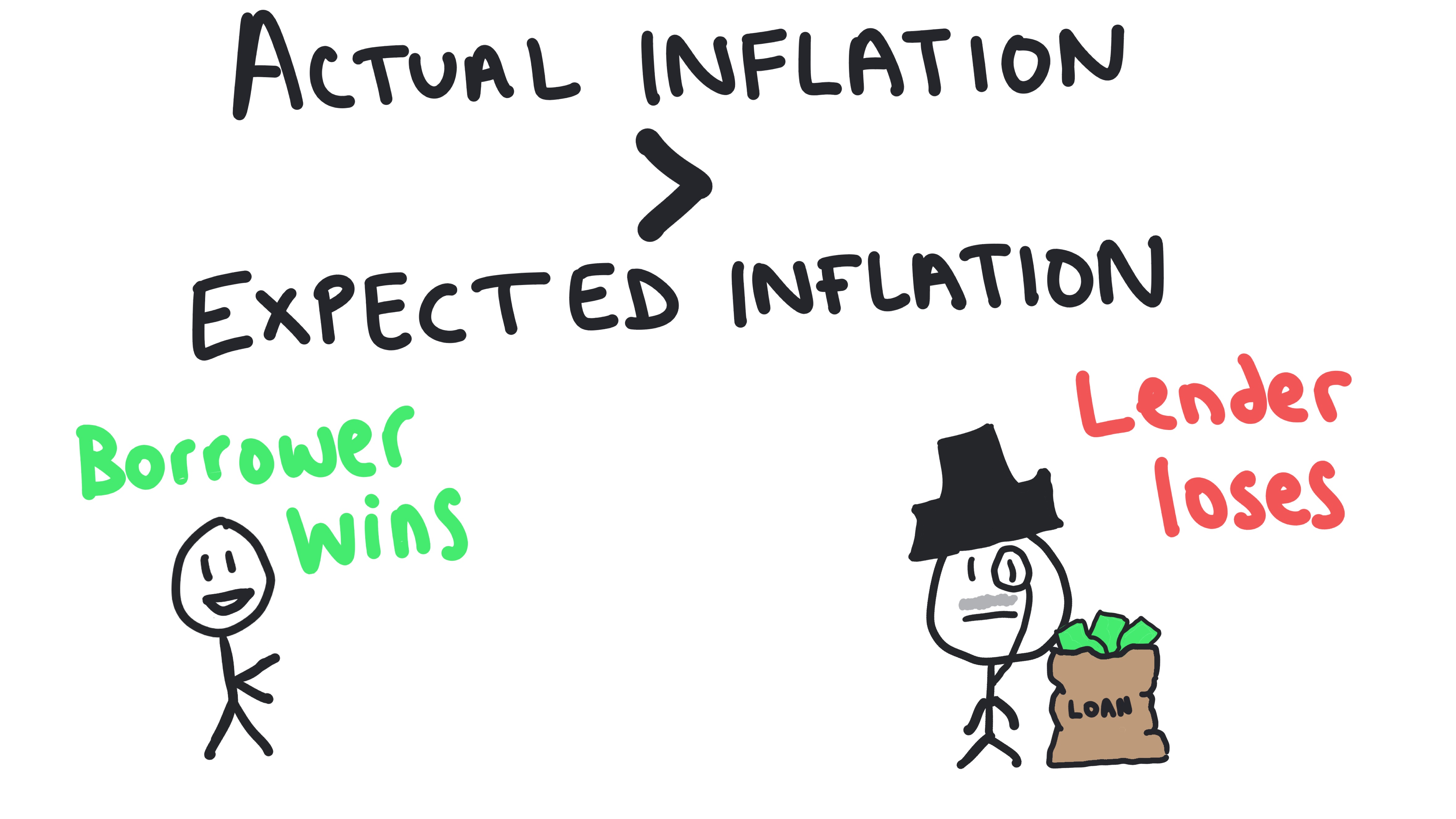
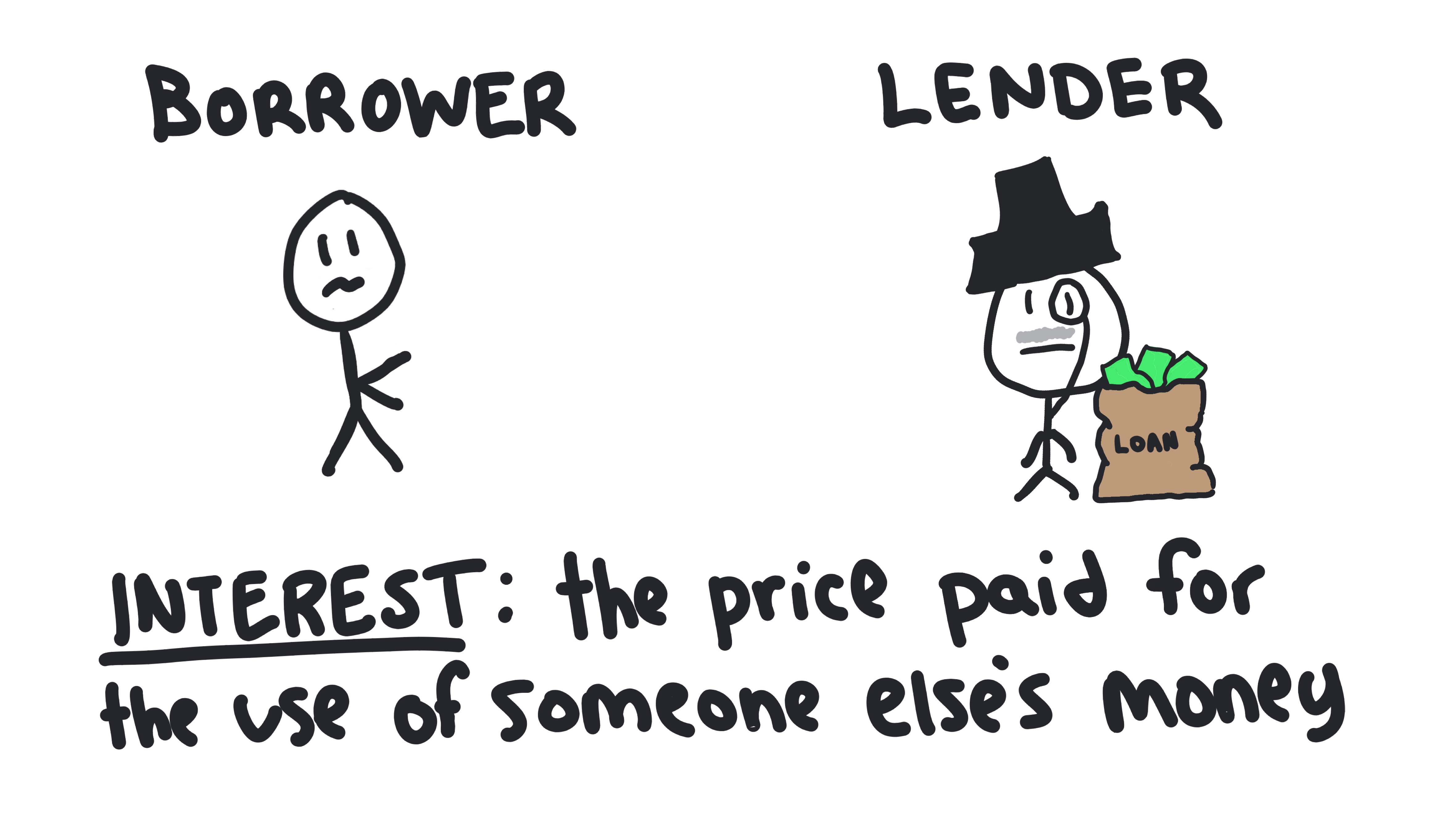
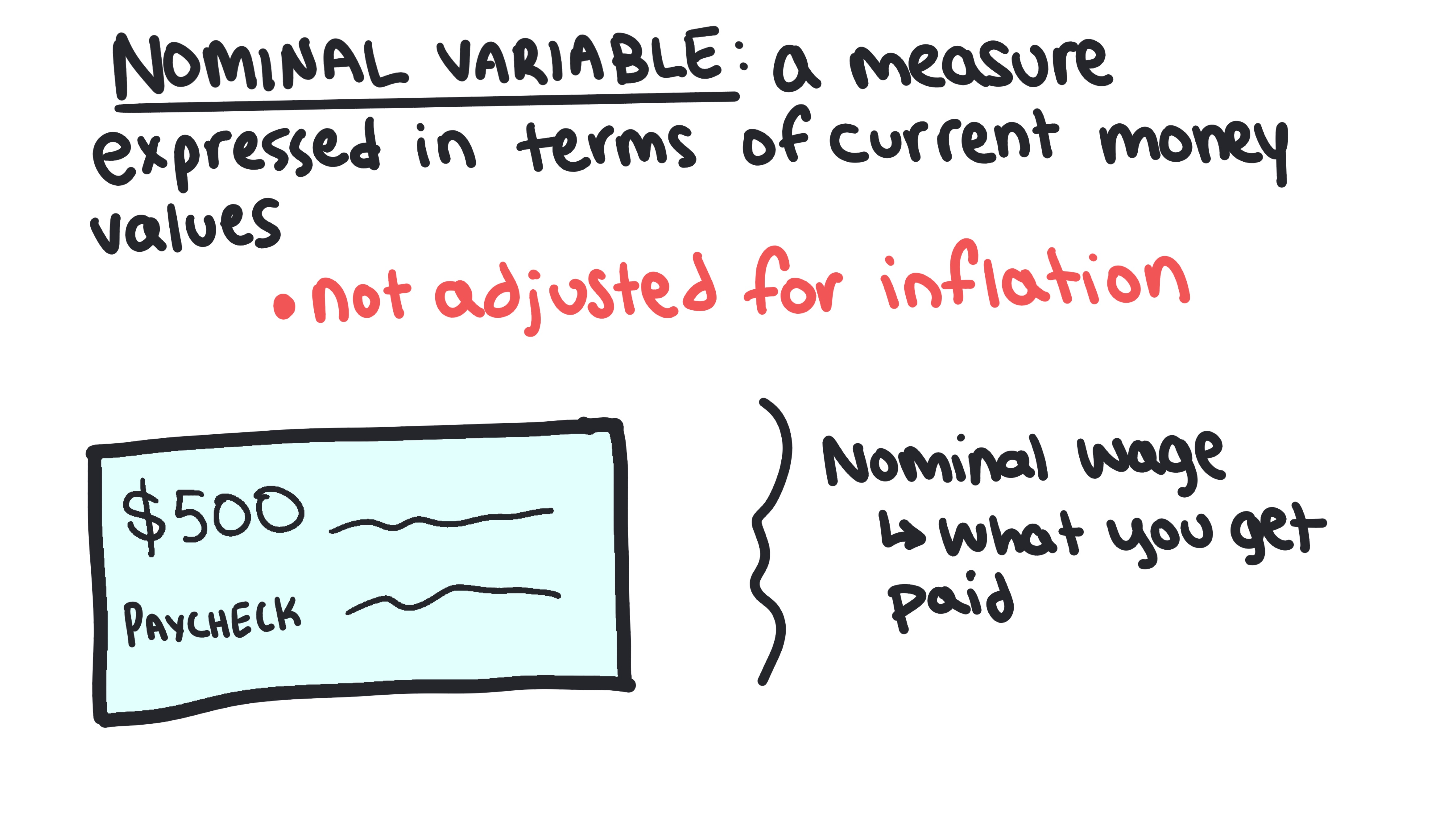
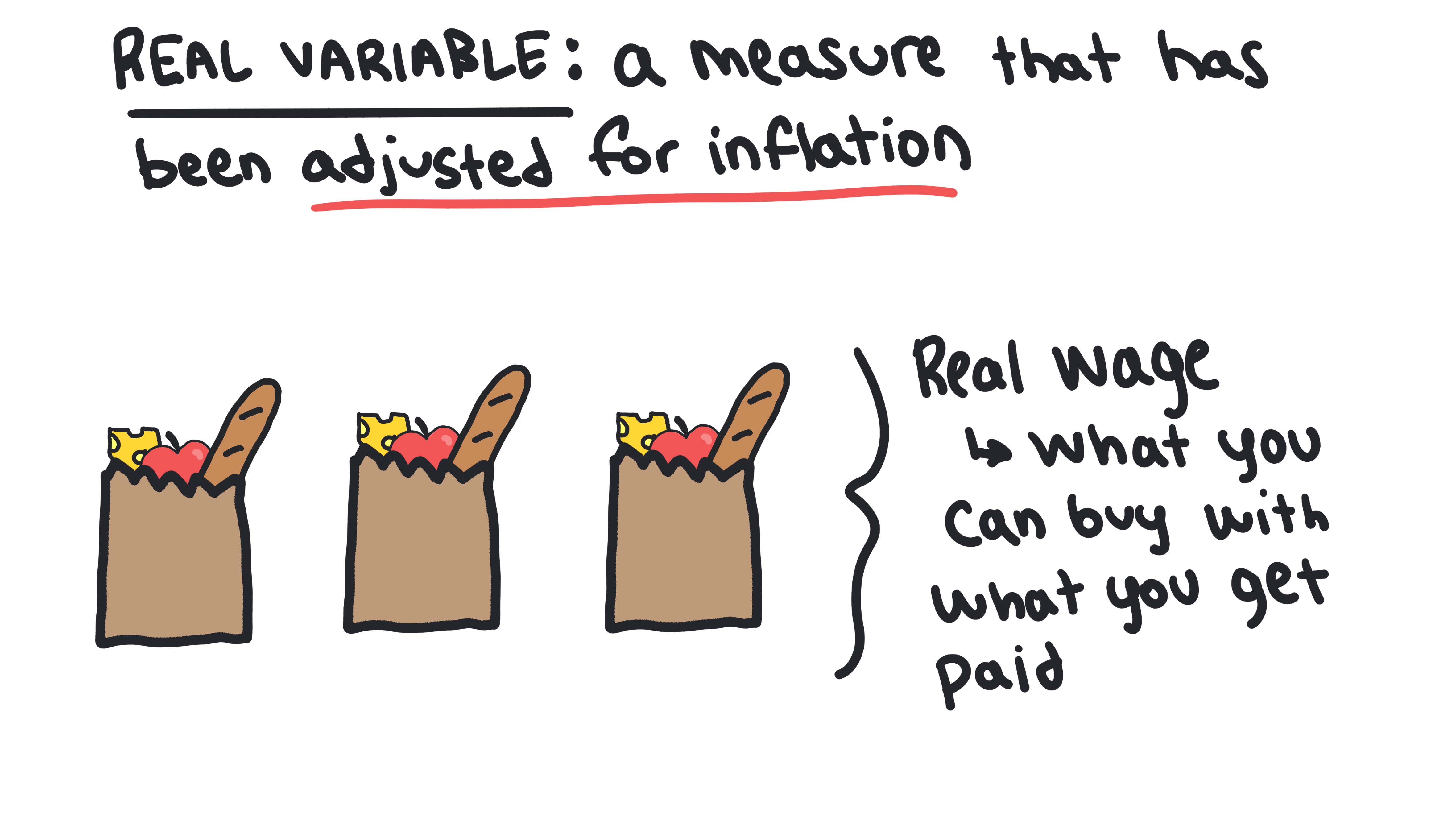
2.6: GDP Deflator and Real vs Nominal
Nominal GDP
The value of output measured in current prices.
Key Points
- Formula: Nominal GDP = Real GDP × (GDP Deflator / 100)
Real GDP
The value of output measured in constant prices from a base year.
Key Points
- Formula: Real GDP = (Nominal GDP / GDP Deflator) × 100
GDP Deflator
A price index measuring price changes for all goods and services in the economy.
Key Points
- Formula: GDP Deflator = (Nominal GDP / Real GDP) × 100
Whiteboards
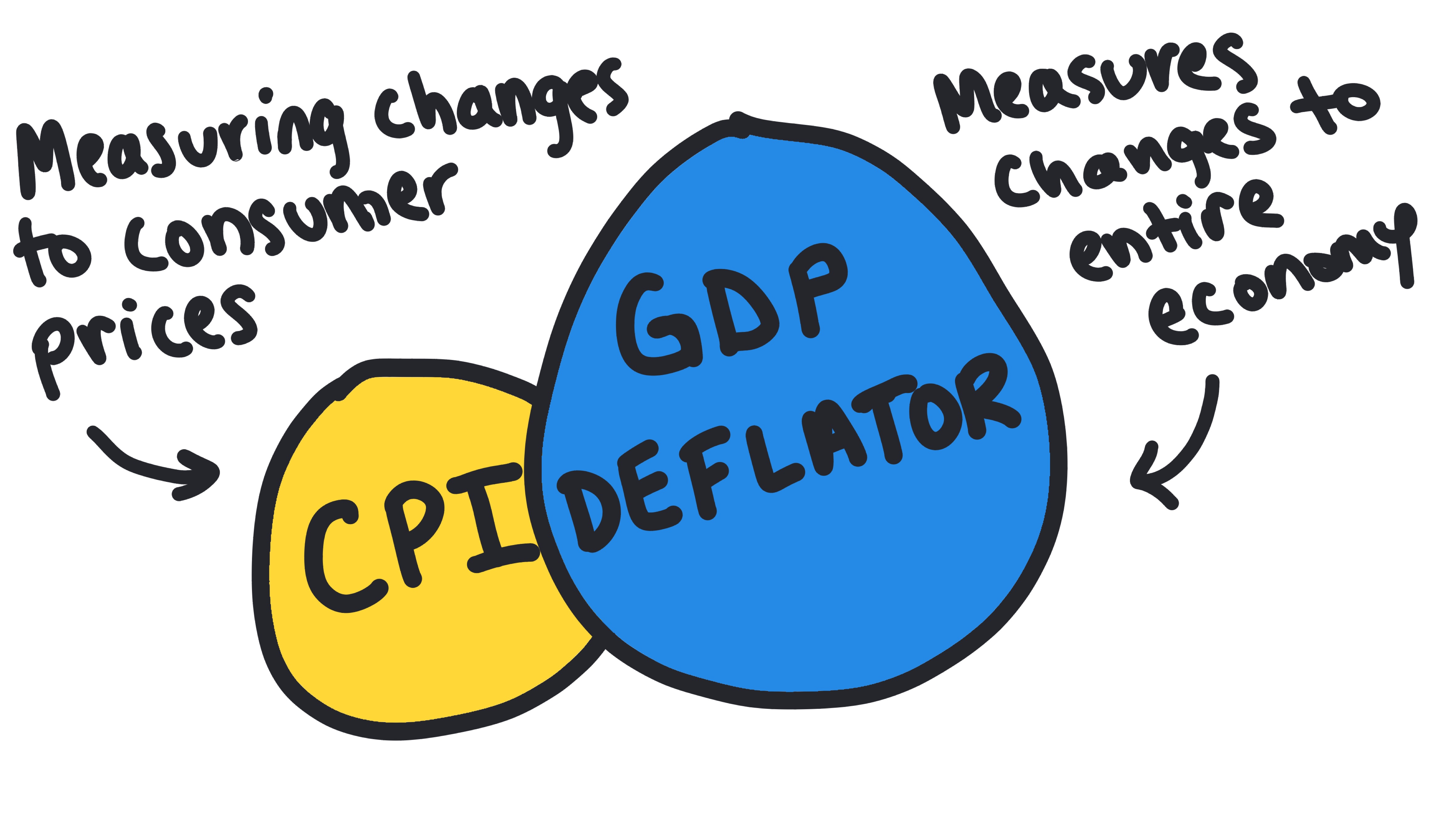
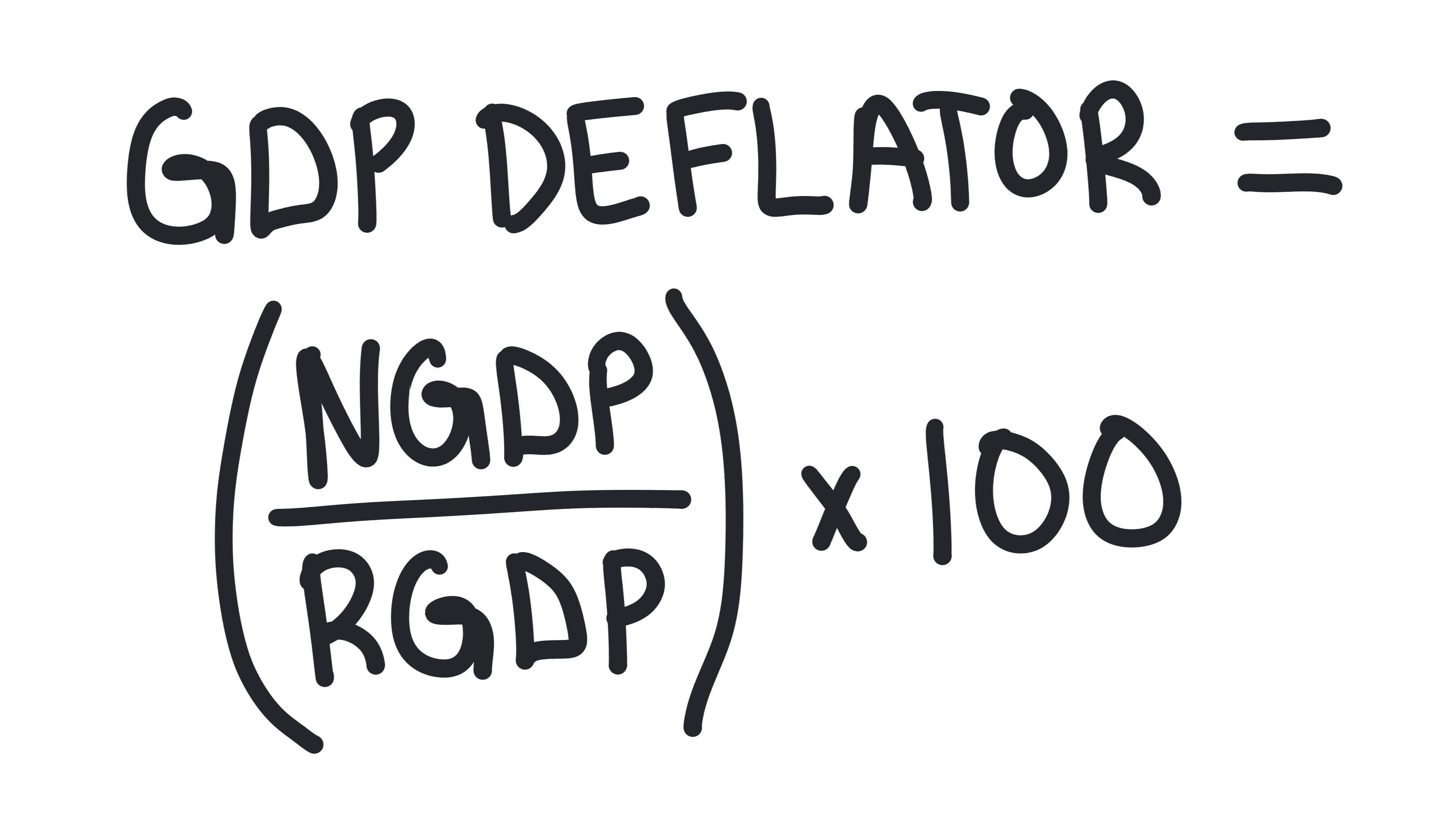
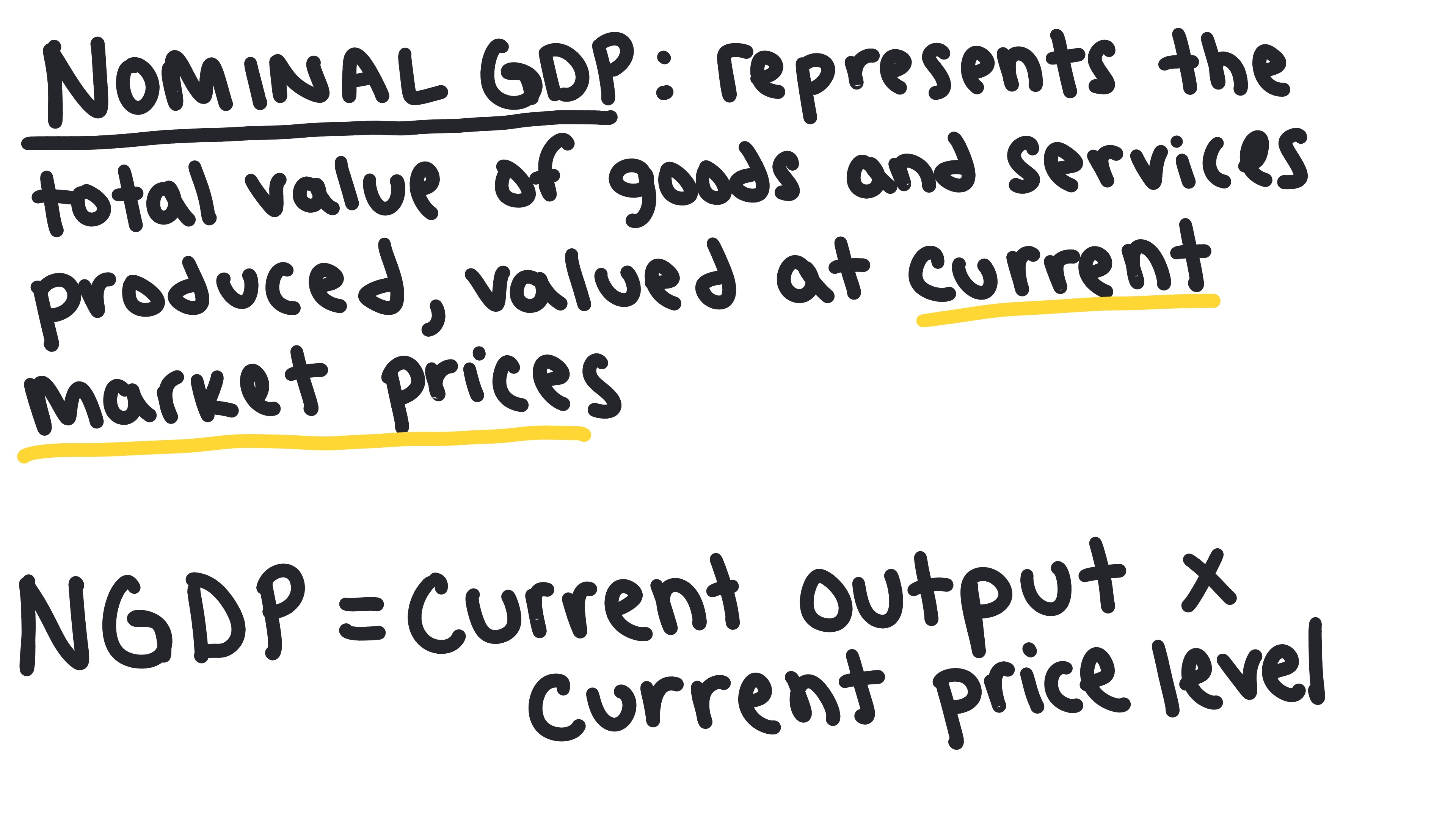
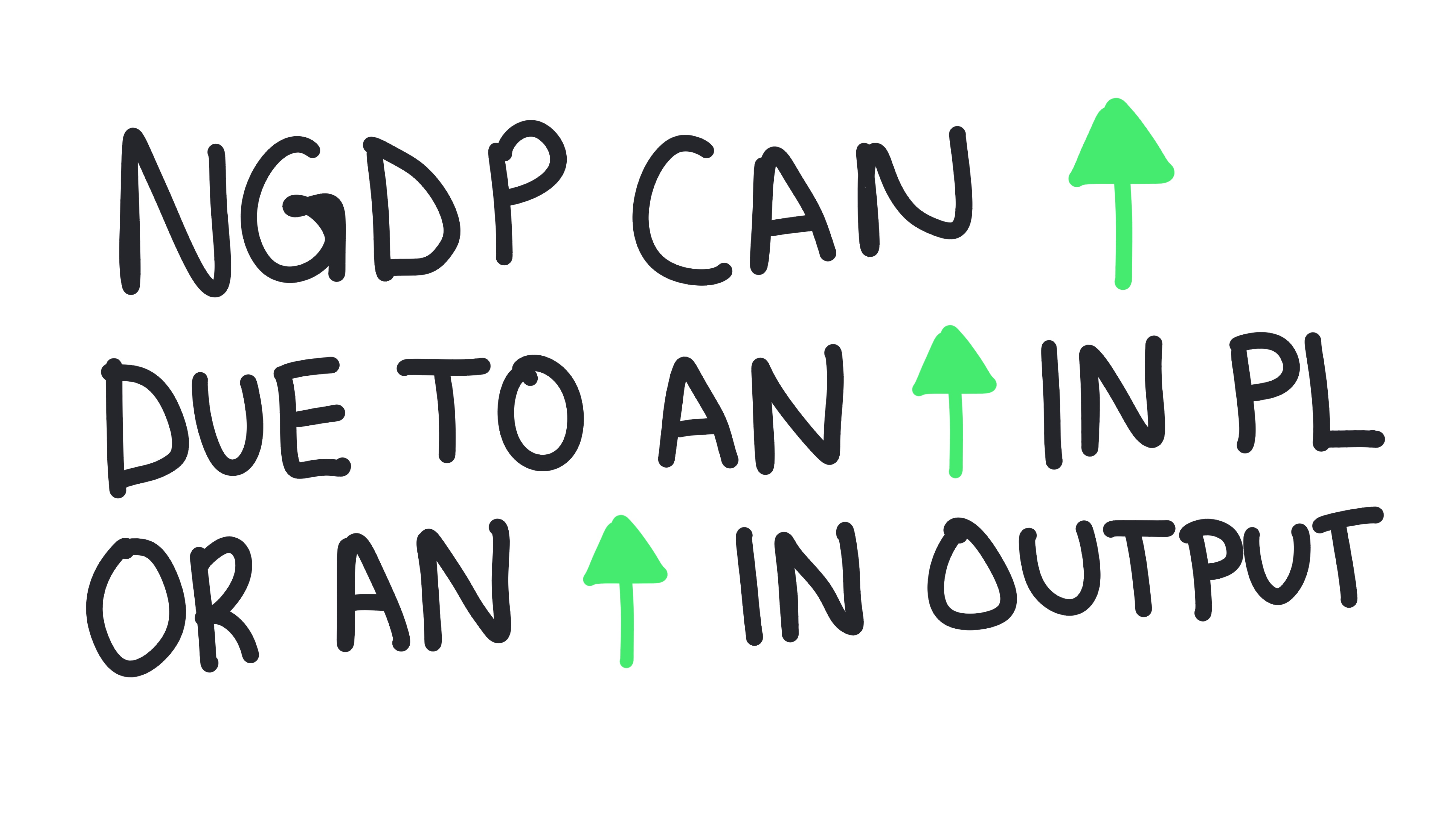
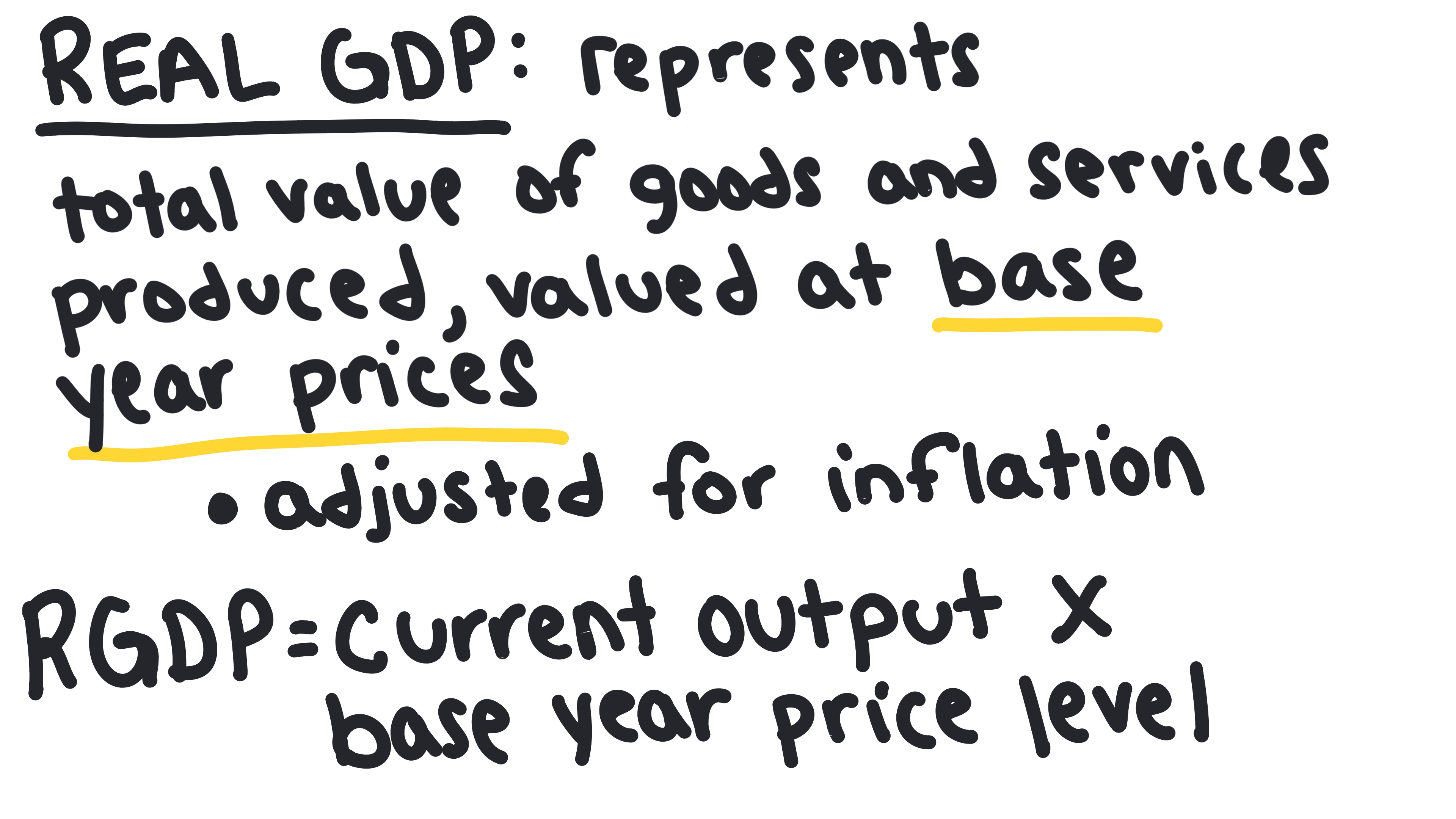
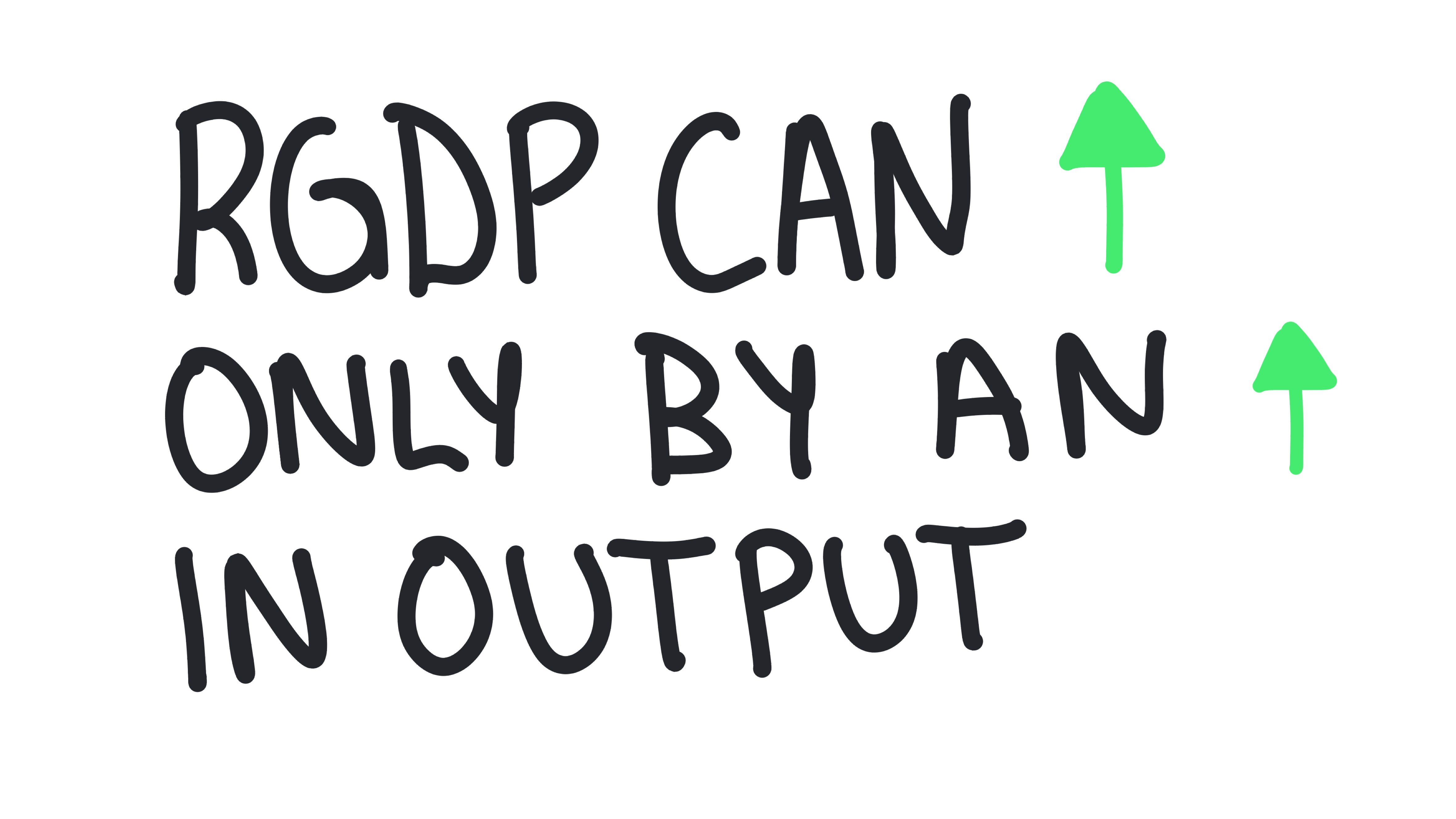
2.7: Business Cycles
Business Cycle
Short-run fluctuations in economic activity, alternating between growth and decline.
Potential Output
GDP level when the economy is at full employment; long-run growth trend.
Actual Output
The GDP actually produced at a given time.
Expansion
Period of rising output, falling unemployment, and economic growth.
Peak
The highest point of an expansion, right before the economy begins to turn down.
Recession (Contraction)
A period when actual output is falling, the economy is shrinking, and unemployment is going up.
Trough
The lowest point of a recession, right before things start to get better and a new expansion begins.
Output Gap
The space between the potential output line and the actual output line, which tells us a lot about the health of the economy.
Recessionary Gap
When actual output is below potential output and the unemployment rate is higher than the natural rate.
Inflationary Gap
When actual output is above potential output, causing the economy to "overheat," and the unemployment rate is lower than the natural rate.
Whiteboards
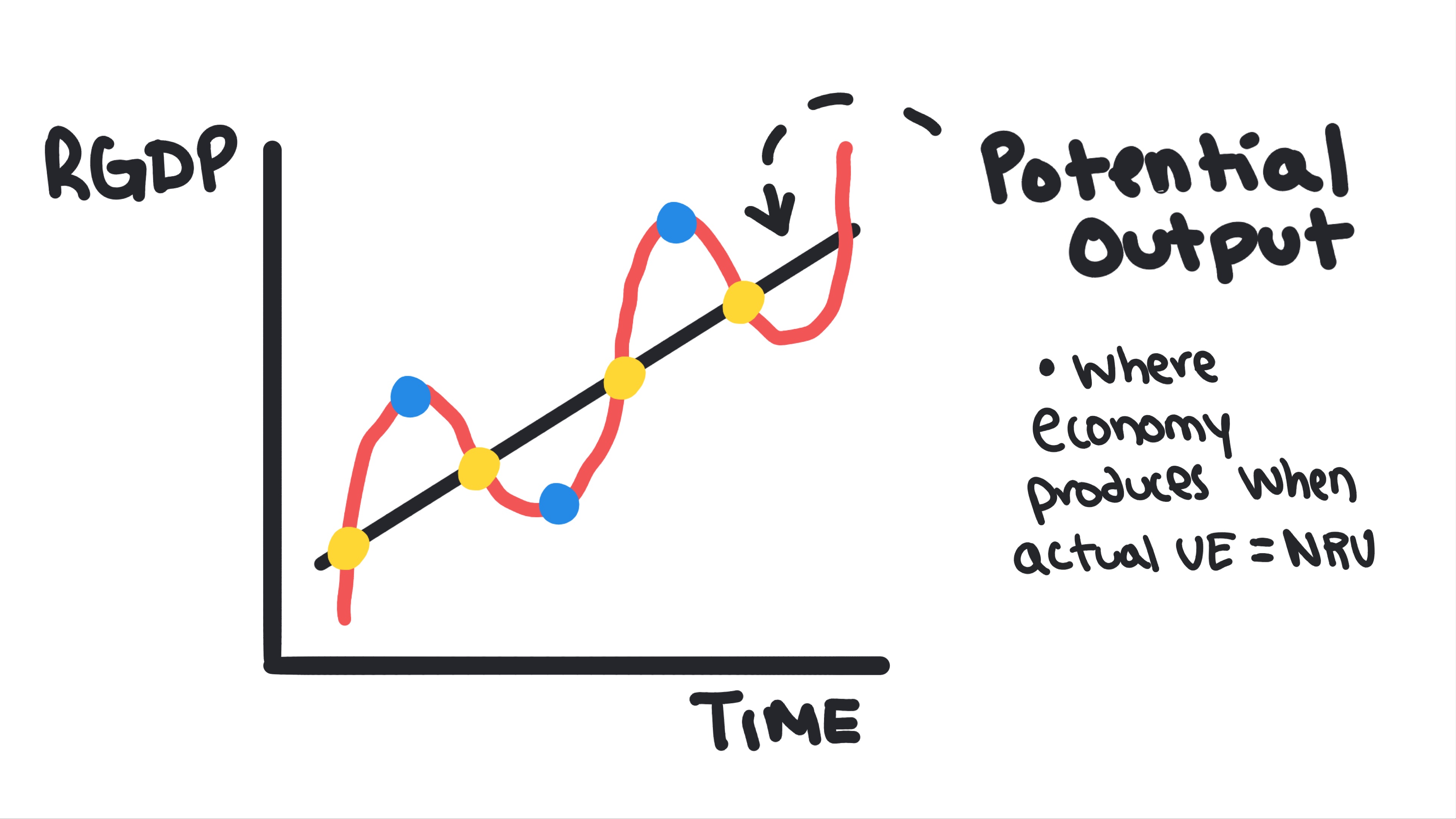
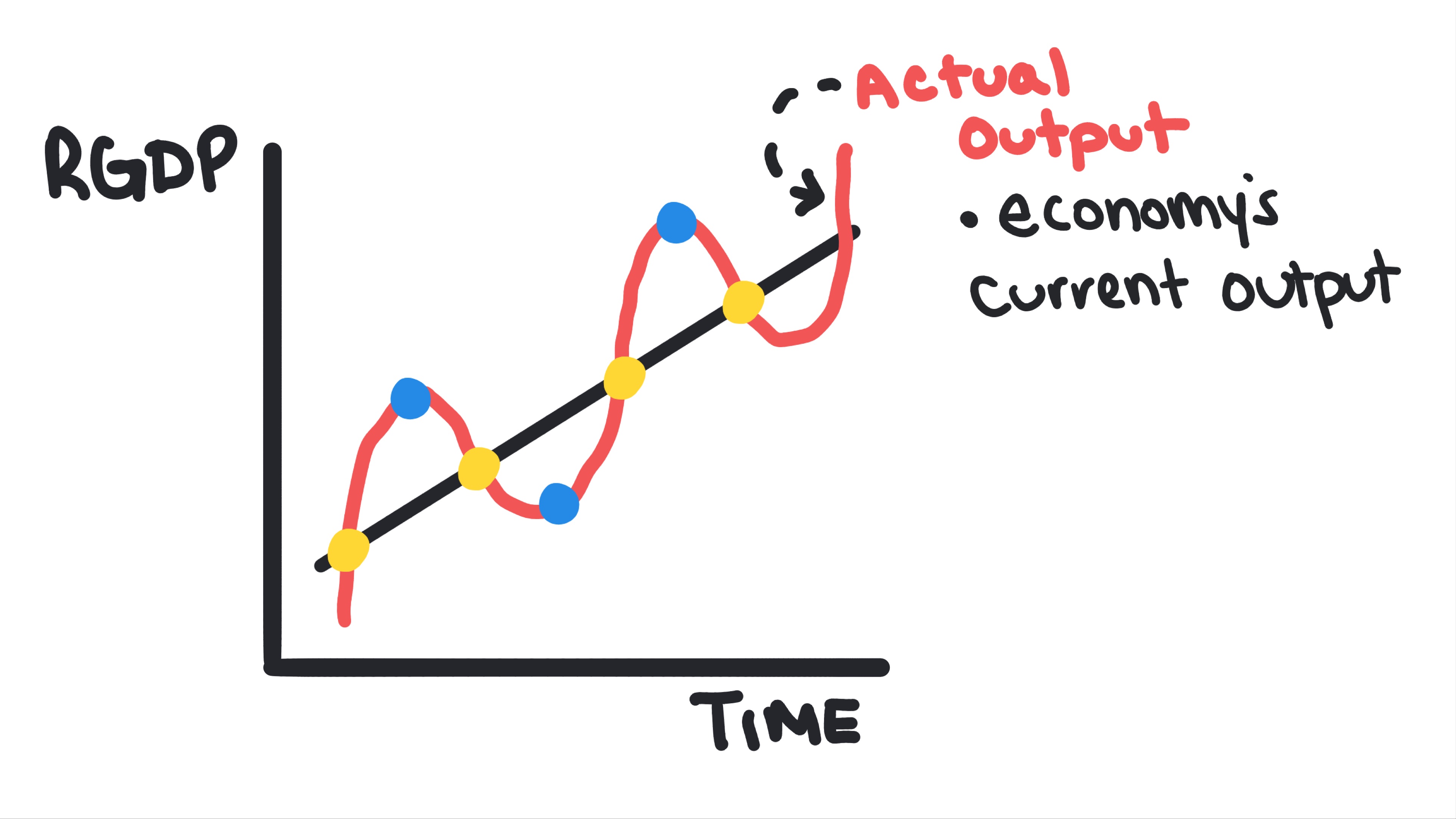
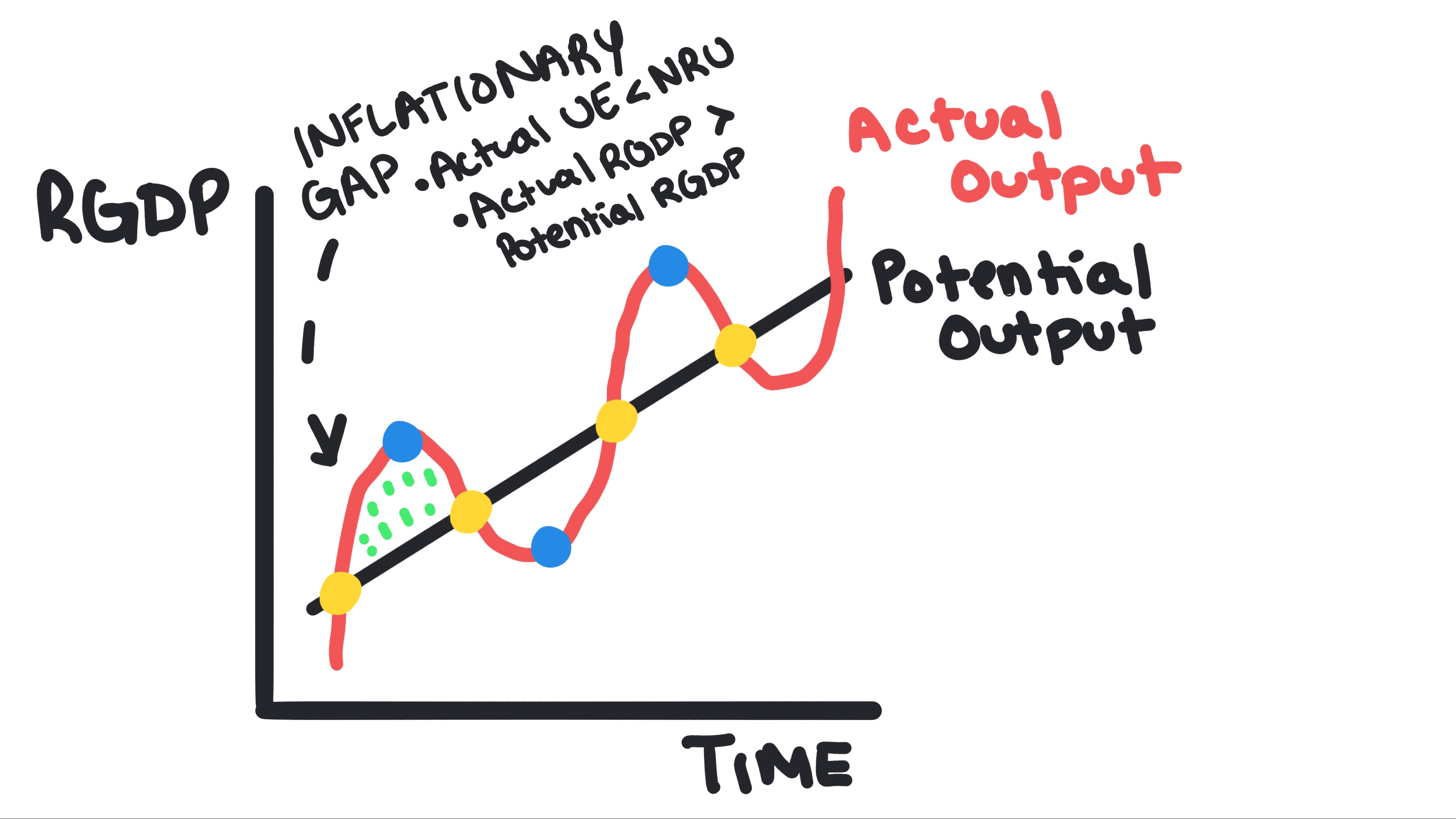
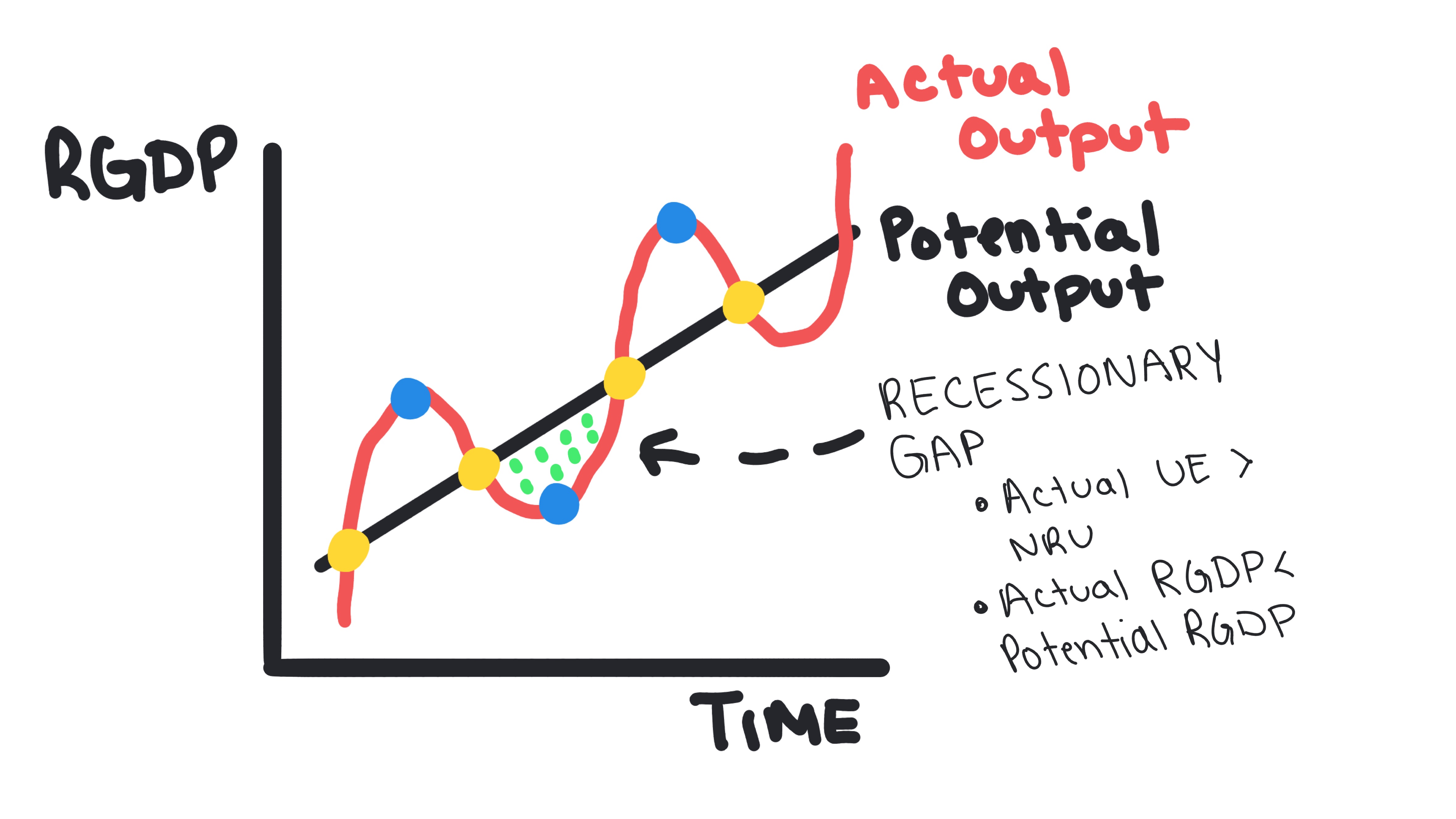
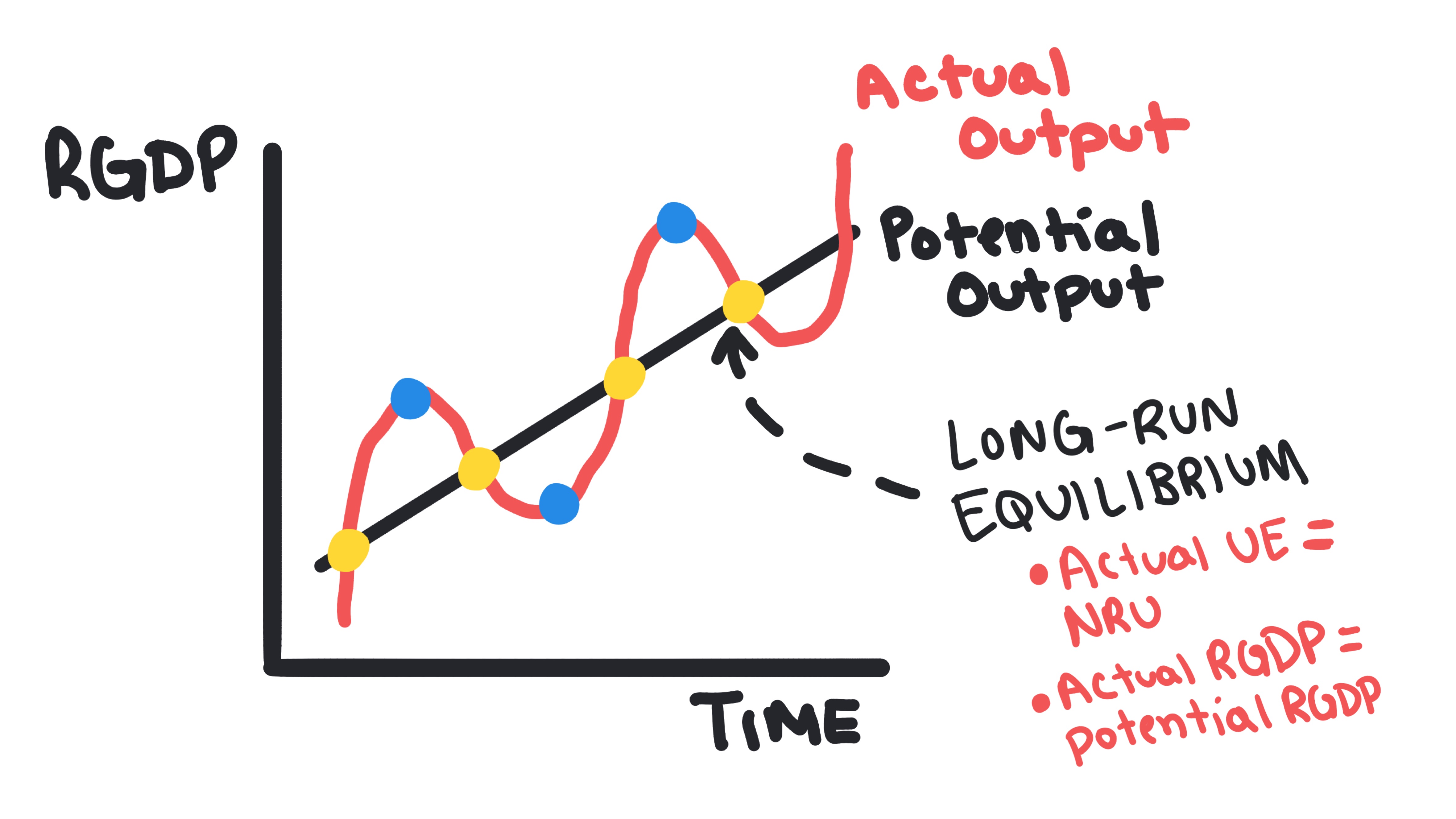
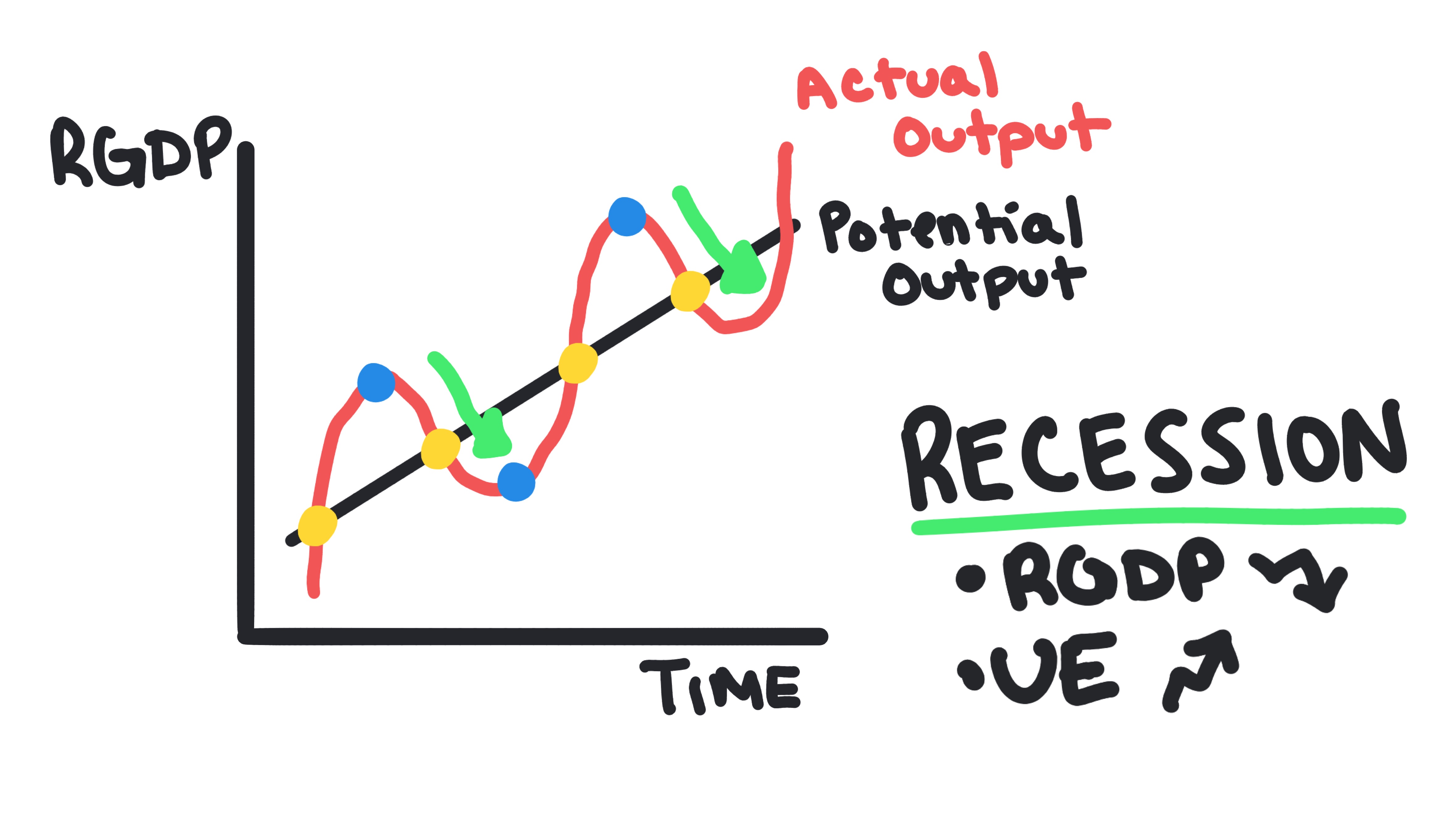
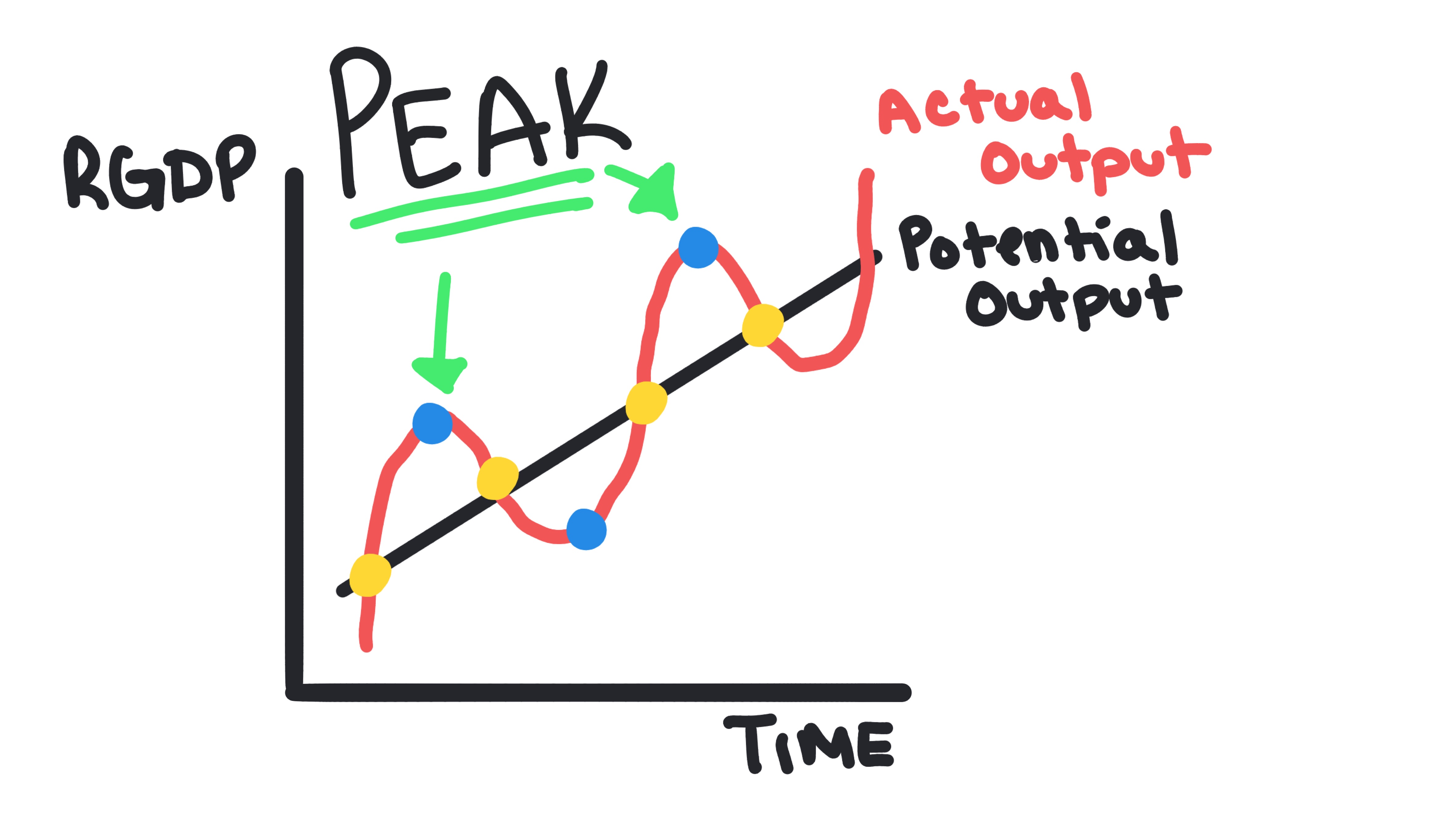
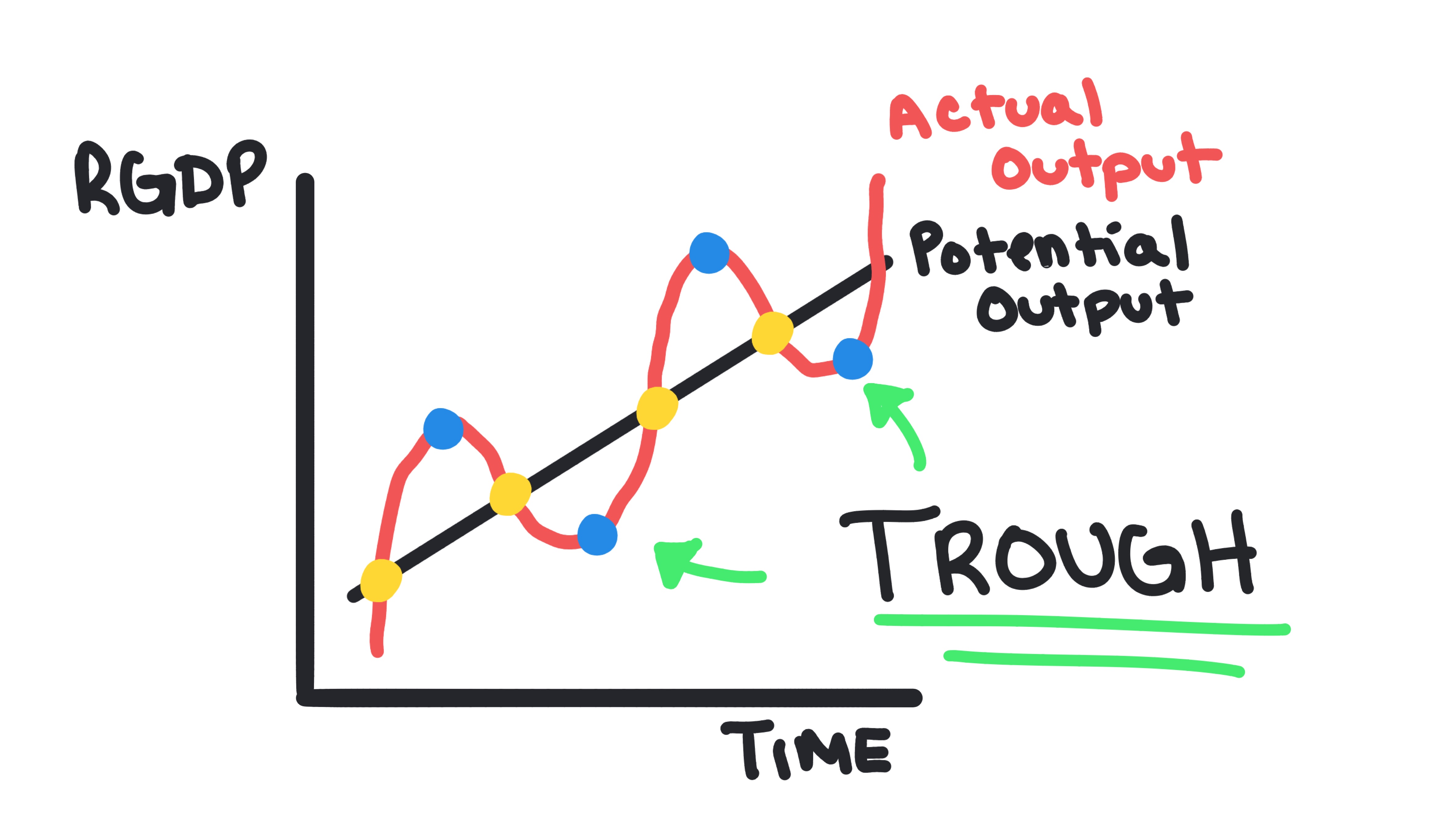
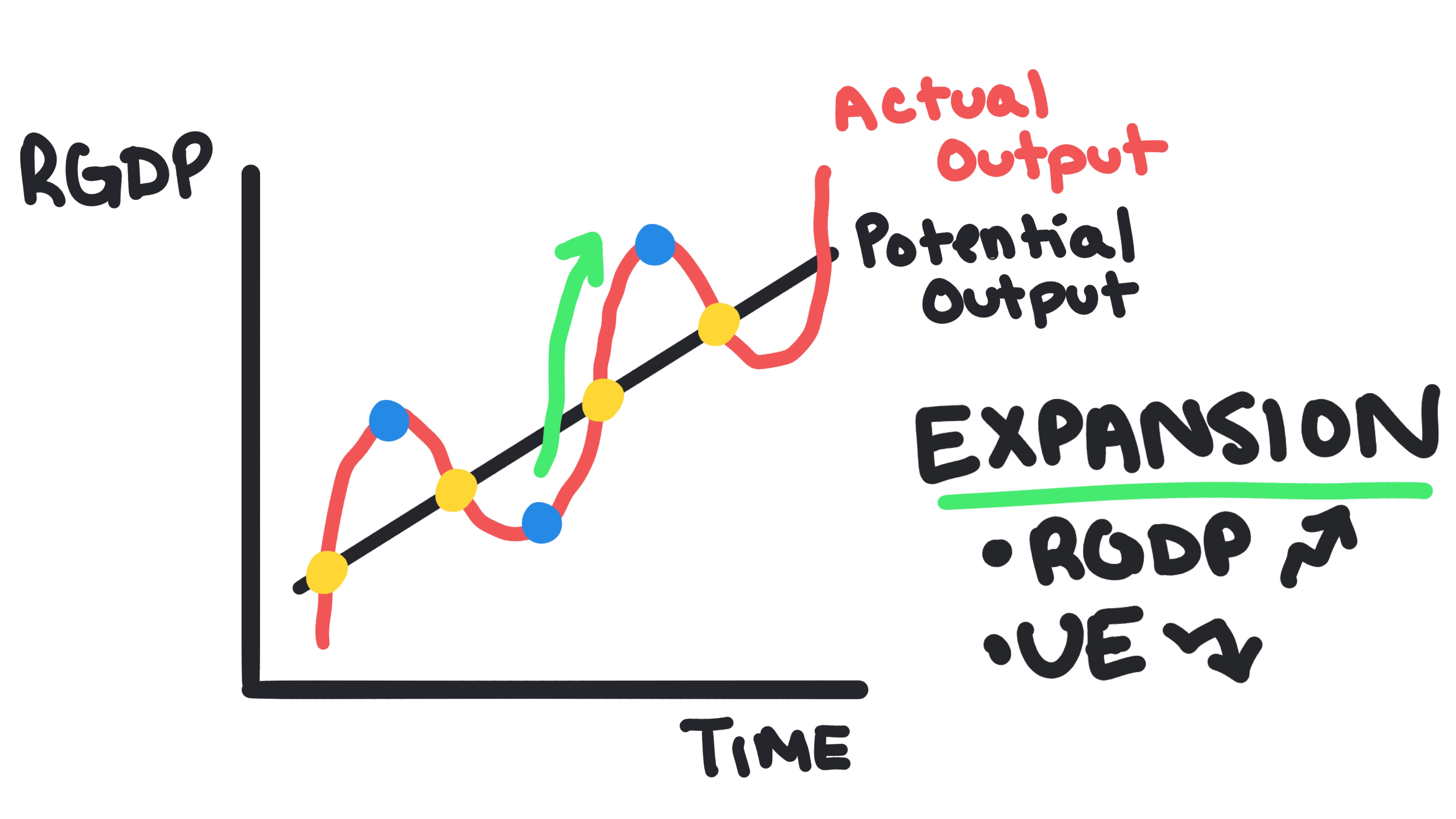
Comprehension Check
Test your understanding with practice questions